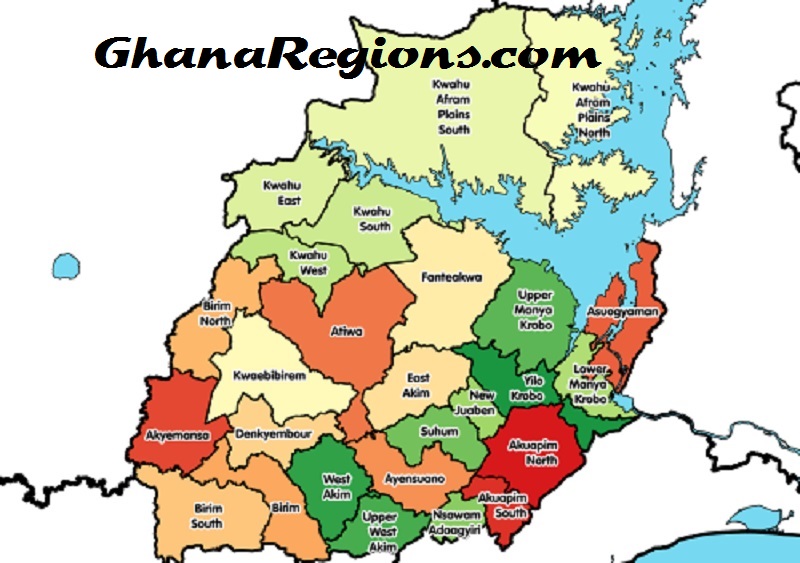
The Eastern Region, with an area of 19,323 square kilometres, occupying 8.1 per cent of the total land area of Ghana, is the sixth largest region of the country.
A total of 2,106,696 population for the region, representing 11.1 per cent of Ghana’s population. It is the third most populous region, after the Ashanti and Greater Accra. The population is made up of 49.2 per cent males and 50.8 per cent females, giving a sex ratio of 96.8 males to 100 females.
Political administration
The region has 17 administrative districts, with Koforidua as the regional capital. There are 26 parliamentary constituencies for the election of the region’s representatives to the National Assembly/Parliament. The political administration is decentralized into a system of district assemblies and the Regional Co-ordinating Council. The District Assemblies, in turn, are decentralised into Local/Area Councils and Unit Committees.
Social characteristics
Household composition and structure
There are 456,663 households and 283,461 houses in the region, with an average household size of 4.6. Within the household structure, 21.7 per cent of the household members are heads, 36.9 per cent children, 9.6 per cent grandchildren, with other relatives making up 18.4 per cent. Thus, 74.0 per cent of the household members are related to the head or to the temporary head of the household, while 4.3 per cent are non-relatives or have affinal relations. This is an indication that the traditional structure of the primary family with an extended family is still prevalent in the region.
Ethnicity
The region has four major ethnic groupings, namely Akan (52.1%), the Ga-Dangme (18.9%), the Ewes (15.9%) and the Guans (7.2%). Of these, the Ewes are the only non-indigenous ethnic group. The Akan predominate in 11 of the 17 districts, with variation from 68 to 80 per cent of the population. The Yilo Krobo and Manya Krobo Districts have the largest concentration of the Ga-Dangmes ,who constitute 70.0 per cent of the inhabitants of these two districts. The Ewe are found mainly in the Asuogyaman (39.1%) and the Afram Plains (50.8%) Districts, while the Guan inhabit the Akwapim North (34.5%), the Suhum-Kraboa- Coaltar (17.0%) and Asuogyaman, (14.1%) Districts.
Religious affiliation
The three major religious groups are Christianity, Islam and Traditional religion. Christians constitute 82.8 per cent of the population, followed by Moslems(6.1%) and adherents of Traditional religion (2.4%). The Christian religion is further broken down into Catholic (9.6%), Protestant (26.7%), Pentecostal/Charismatic (33.4%) and other Christian religions (13.1%).
Marital status of the population
Of the 1,227,612 people, 15 years and older, 56.3 per cent are married, including 7.1 per cent in consensual unions. The never- married constitute 29.8 per cent and the 13.9 per cent who have ever married, but are no more in a marital union, are made up of 2.1 per cent separated, 6.2 per cent divorced and 5.6 per cent widowed.
District level analysis shows that the incidence of both divorce and widowhood is substantially higher among females than males in each district in the region. By contrast, the proportion of the never married males, which varies from 32.0 per cent to 49.1 per cent, is higher in every district, than that of females, which varies from 19.8 per cent to 34.0 per cent. It is also worth noting that the lowest percentage of the never- married males (29.8% in Kwaebibirem) is 17.1 percentage points lower than the highest percentage of never- married females (49.1% in New Juaben) compared with 14.1 percentage points differential between the highest percentage of the never- married males and females.
Thus, while the proportion of females separated, divorced, widowed or in consensual unions is substantially higher than those of males, the proportion of males who never married is equally substantially higher than that of females. Analysis of the marital status of the 12-14 years group population indicates that 2.9 per cent have ever married.
Education and literacy
Nearly two-thirds (63.6%) of the population aged 15 years and older are literate, 46.4 per cent literate in both English and a Ghanaian language. The proportion of illiterate is 36.4 per cent of the regional population. The level of literacy is higher for males (73.5%) than for females (54.4%).
There is a considerable variation in the literacy levels among the districts. For example, in the Afram Plains District, which has the highest illiteracy level among the districts, almost two out of every three females (65.9%) are illiterates. The next highest illiteracy rate for females is in the Manya Krobo (55.5%), followed by the Yilo Krobo Districts (54.1). Inability to read and write is lower for males than for females in the districts. The Afram Plains District has the highest illiteracy rate (50.0%) for males, followed by males in the Fanteakwa District (33.7%). The least illiteracy level is in the New Juaben municipality where illiterates constitute 19.0 per cent of the adult population.
Educational attainment
Of a population of 1,739,535, aged six years and older in the region, 30.6 per cent have never attended school. The proportion with Middle or JSS education is 30.1 per cent, while 25.5 per cent have primary education. Only 2.0 per cent have reached the tertiary level. The level of educational attainment for both males and females varies. Of the male population, six years and older, 24.0 per cent have never attended school, compared with 37.1 per cent for the females.
The level of educational attainment across the districts shows that slightly more than half of the population (51.9%) of Afram Plains, the highest in the region, have never attended school. The situation improves slightly in the Manya Krobo District (38.1%) and better still in the New Juaben municipality (16.0%). The New Juaben municipality has the highest percentage (35.8%) of those who attained Middle/JSS education while the Afram Plains has the least percentage (18.4%).
The Birim North has the highest percentage for primary school attainment, (28.9%) followed by the Suhum-Kraboa-Coaltar district (27.2%); the lowest in the Afram Plains (18.4%). Which also has the highest percentage (56.2%) of females who have never attended school, compared with 48.3 per cent males. The New Juaben municipality has the lowest percentage of males (10.8%) and females (20.8%) who have never school.
Current school attendance
Of the total enrolment 513,068 six years and older, in schools in the region, 62.4 per cent are at the primary level, 23.1 per cent at the Junior Secondary School and 6.9 per cent at the Senior Secondary School levels. It becomes immediately clear that there are serious distortions at the various levels. Should all the pupils at the primary schools qualify to enrol in the Junior Secondary Schools; the existing schools at the JSS level should run 3 shifts a day to accommodate them.
This attests not only to the stiff competition at the points of entry to the JSS, SSS levels as well as at the tertiary level but also accounts for the significant proportion of students who terminate their education at the primary and JSS levels.
The pattern of pupils/students, in the lower grades, competing for fewer places at the higher levels is reflected in all the districts. The differences are that there are better opportunities for those districts, which are better endowed with social amenities. For example, in the New Juaben municipality those in primary school, 51.1 per cent of the school population, have to compete for 25.1 per cent of places at the JSS level while the JSS students also have to complete for 11.4 per cent of places at the SSS level. This contrast with the situation in Afram Plains, where 66.5 per cent of primary school pupils have to compete for 15.0 per cent and 7.6 per cent of places at the JSS and SSS levels.
Economic characteristics
The region has a total of 927,699 persons (75.5%) who are economically active and 299,913 persons (24.5%) not economically active. For the economically active population, (87.0%) worked during the 7 days before the census, while 4.6 per cent had a job but did not work and 8.4 per cent were unemployed. There are no major differences between the males (87.8%) and females (86.2%) who worked during the period.
The percentages unemployed are (8.1%) for males and (8.7%) for females. The not economically active population is made up largely of students (35.6%) and homemakers (24.8%). The proportion of male students is larger than that of female students, while the proportion of female homemakers is higher than male homemakers. The proportion of the aged and the retired/pensioners is higher for females (19.3%) than for males (14.2%). This pattern of economic activity is the same for all the 17 districts with little variations from district to district. There is very little difference between the male physically challenged persons, (3.8%) and the females (3.7%).
Occupation
The main occupations of the economically active population in the region are Agriculture and related work (54.8%), Sales (14.3%), Production, Transport and Equipment work (14.0%) and Professional and Technical work (6.9%) with Services accounting for 5.0 per cent. The four principal occupations for males are agriculture and related work (56.9%), Production, Transport and Equipment work (16.6%), Professional and Technical work (8.6%) and Sales work (6.5%). These occupations are similar for females, except in Sales work where females (21.8%) feature more significantly than males. The proportions for females are: Agriculture and related work, 52.7 per cent; Production, Transport and Equipment work, 11.5 per cent; Professional and Technical, and related work 5.2 per cent and Sales work, 21.8 per cent.
Industry
There are three main industrial activities in the region, namely Agriculture including Hunting, Forestry (54.9%), Wholesale and Retail trade (13.5%) and Manufacturing (9.1%). In Agriculture and related work, males constitute 57.4 per cent, compared with 52.6 per cent of females. However, females are predominant in Wholesale and Retail Trade (19.3%), compared with 7.4 per cent males. In the Manufacturing industry, female participation (9.5%) is higher than that of males (8.8%). Birim North District has the highest economically active population in Agriculture and related work for both males (77.6%) and females (73.9%) while in New Juaben, only 17.7 per cent of males and 14.3 per cent of females are in that industry.
In the Manufacturing sector, the highest percentage for males (15.4%) and for females (15.0%) is in New Juaben municipality, with the lowest for both males (3.2%) and female (4.4%) in the Afram Plains District. Similarly, in the Wholesale and Retail Trade, the highest proportion for males (17.4%) and for females (39.1%) is in New Juaben municipality, while the Afram Plains District has the lowest for both males (2.2%) and females (6.6%).
Employment status and sector
Nearly four-fifths (77.7%) of the economically active population in the region are selfemployed with no employees. The next largest category is employees (11.5%), while selfemployed with employees are 4.3 per cent of the economically active population. Those in the categories of unpaid family workers, apprentices and domestic employees make up the remaining 6.5 per cent. Females constitute the highest proportion of self-employed without employees, mainly in the private informal sector. The private informal sector employs 80.5 per cent of workers followed by the private formal with 12.3 per cent and the public sector 6.1 per cent.
Housing stock
The total stock of houses in the region is 283,461 with a total of 456,663 households. The number of households per house is 1.6, with an average household size of 4.6. There has been an increase of 51.4 per cent in the stock of houses over the 1984 census count. About three-fifths (58.2%) of household members own their dwelling units, 20.9 per cent rent the dwelling units, 20.2 per cent pay no rent and 0.7 per cent perch with others. In view of the housing situation in the region, future housing programmes should consider the needs for, and the affordability of, the types and categories of housing to be provided.
Types of dwelling
Compound, separate and semi-detached houses are the three common types of dwellings occupied by households in the districts. Of these, the commonest is the compound house, occupied by 43.1 per cent of households. The New Juaben municipality has the highest percentage of households (67.1%) living in compound houses.
Construction materials
Mud/mud brick/earth and cement/concrete blocks are the two main construction materials used by households for walls in the districts. Of the two construction materials, mud or mud brick/earth accounts for 56.2 per cent of all types of materials used for wall construction. The use of this type of material features most prominently in wall construction in Afram Plains, accounting for 87.9 per cent of all types of wall materials.
Roof
About four in every five households (82.1%) in the districts live in dwelling units roofed with corrugated metal sheets. The use of this type of roofing material features most prominently in Suhum-Kraboa-Coaltar (95.4%), the highest in the region. A significant number (12.6%) of dwelling units have thatch/palm leaf roofs.
Floor
The floor of almost three quarters (73.8%) of dwelling units in the region is made of cement or concrete. It is the commonest type of floor material used in all districts, particularly in the New Juaben municipality (85.8%).
Rooms and sleeping rooms for households
A little over a third (36.1%) of households in the region have one room, with about half (48.6%) of households having a single sleeping room. Next to this are households with two sleeping rooms (23.8%). At the district level, about a half (48.0%) of households in the West Akim district have a single room while about three-fifths (59.2%) of households have a single sleeping room. The data reflect the inadequacy of rooms as well as sleeping rooms for the majority of households. It is a situation which is likely to create overcrowding.
Household facilities and amenities
Drinking water
Almost a quarter (23.6%) of households in the region use the river, stream, pond or lake as their main source of drinking water. While 23.0 per cent use the well, 19.4 per cent rely on pipe-borne water located outside the premises and an additional 8.8 per cent use pipe borne water located within the house for their supply of drinking water. At the district level, Fanteakwa has the highest proportion (54.5%) of households that draw drinking water from the river, stream, pond and lake.
On the other hand, New Juaben has the highest percentage (39.0%) of households whose source of main drinking water is pipe-borne, located within the premises and 29.9 per cent with pipe-borne water located outside the premises. Notwithstanding the availability of the basic infrastructure for pipe-borne water in the New Juaben municipality and other urban centres, water is woefully inadequate for the use of households and is a source of constant concern for the District Assemblies.
The volume of treated water is inadequate and the distribution system is inefficient. Schemes on the drawing boards of the District Assemblies should have priority of implementation to ameliorate the situation.
Lighting
The kerosene lamp is the main source of lighting in the region, used by 64.3 per cent of households. Apart from the kerosene lamp, electricity is the second major source of lighting in 34.3 per cent of households. For the districts, Afram Plains has the highest proportion (89.5%) of households using kerosene lamps as the main source of lighting compared with New Juaben which has the highest proportion (77.6%) of households using electricity for lighting.
Fuel and space for cooking
About 70.0 per cent (68.8%) of households use wood and 22.0 per cent use charcoal as the main fuel for cooking. The District Assemblies have, as a matter of serious concern to consider introducing L.P. Gas cylinders of different sizes to encourage the use of L.P. Gas as the main source of cooking fuel in the region. In the long run, charcoal is more expensive than L.P. Gas, but it can be bought in smaller quantities when needed.
Wood as cooking fuel is highest in the Fanteakwa District (89.5%); compared with the regional average of 68.8 per cent. The use of charcoal as a cooking fuel is highest in the New Juaben municipality (52.4%) compared with the regional average is 22.0 per cent. This can be explained by the fact that charcoal, processed from wood, is more affordable in the urban setting and that wood is more accessible in the rural areas, than in the urban. With such a high proportion of households (90.8%) using wood and charcoal as their main fuel for cooking, there is a serious threat to the environment, in particular its consequence on the depletion of forests.
Cooking space
Nearly two in five households (37.9%) have separate rooms exclusively set aside for cooking purposes. At the district levels, the Afram Plains District has the highest percentage (46.1) of households who have a separate room set aside exclusively for cooking.
Bathing facility
About a third (31.7%) of households in the region use a shared bathroom; a quarter (24.1%) own a bathroom for their exclusive use; about a fifth (18.0%) share open cubicles, and slightly more than a tenth (11.8%) have open cubicles for private use in addition to 4.0 per cent using a bathing facility in another house.
Toilet facility
Over a third (37.5%) of households in the region use the pit latrine in the house, while 29.8 per cent use public toilets of all kinds (pit, pan, KVIP and W.C), In the districts, the Fanteakwa District has the highest proportion (58.9%) of households that use a pit latrine. The New Juaben municipality has the highest use of the W.C. (17.7%) and of public toilets (39.5%). It is noteworthy that only 5.4 per cent of dwelling units in the region have no access to an accepted toilet facility, compared with the national average of 20.0 per cent. In the districts, households with no toilet facility range from 1.2 per cent in the New Juaben municipality to 28.6 per cent in the Afram Plains District.
Solid waste disposal
More than half (56.5%) of households in the region dispose of solid waste in public dumps, while a quarter (25.2%) dump their household waste anywhere. A tenth (10.1%) of households bury their solid waste in and around their compounds. The vast majority of households in the districts for example Birim South (72.5%), New Juaben (70.0%) and West Akim (66.3%) districts dispose of their solid waste in public dumps, Almost half (48.9%) of the households in the Afram Plains District and 40.6 per cent in the Fanteakwa District, dump solid waste elsewhere, a practice which can impact negatively on the environmental sanitation condition of residents.
Liquid waste disposal
Only 2.0 per cent of households dispose of their liquid waste through the sewerage system. The large proportion (48.2%) of households dispose of their liquid waste by throwing such waste onto the compound, while other households throw liquid waste onto the street, outside (31.6%) or into the gutter (17.8%).
Within the districts, households in the Afram Plains (78.0%), Fanteakwa (68.8%) and Manya Krobo (58.2%) districts have the greatest tendency to throw liquid waste onto the compounds compared with households in the New Juaben municipality (25.2%). The practice of households throwing liquid waste onto the street is least in the Birim South (41.8%), Birim North (39.3%) and Suhum-Kraboa-Coaltar (39.3%), districts.
Physical features
Area
The Eastern Region occupies a land area of 19,323 kilometres and constitutes 8.1 per cent of the total land area of Ghana. It is the sixth largest region in terms of land area. It lies between latitudes 6o and 7o North and between longitudes 1o30’ West and 0o30’ East. The region shares common boundaries with the Greater Accra, Central, Ashanti, Brong Ahafo and Volta Regions.
The region has four main geographical features, namely:
(i) The Kwahu scarp with an elevation of 2,586 feet above sea level.
(ii) The Atiwa-Atwaredu Ranges near Kibi, reaching an elevation of 2,400 feet.
(iii) The Akuapem highland attaining an elevation of 1,530 feet which is the southern extension of the Togo-Atakora mountain ranges and
(iv) The isolated hills/mountains dotting the relatively low-lying plains to the south, notably the Krobo and the Yogaga mountains.
The Kwahu Scarp and the Atiwa-Atwaredu form the major watershed of the region. It is from these that the major rivers such as the Pra, Birim and the Densu take their sources. The Volta lake also covers part of the region. The Kwahu scarp also has the highest inhabited place in Ghana, at Abetifi, though this is not the highest mountain pick in the country. The Akosombo and Kpong dams are located in the region. These rivers and the Volta lake are water bodies with high potentials for irrigation, farming, inland fishing, water transport as well as sources for drinking water for both urban and rural settlements. The region is also characterized by long range forest highlands such as the Akim, Kwahu, Akwamu, Krobo and Shai Hills.
The region is rich in minerals such as gold, diamond, bauxite-tantalite, limestone, kaolin and clay. Gold and diamond are however the only minerals that are mined commercially. For over 70 years, the diamond mines at Akwatia and Takrowase in the Birim River Valley was producing high quality industrial diamonds, but this has declined considerably over the last two decades. Plans to mine the major bauxite deposits at Kibi on the Atiwa Range are yet to materialize due to financial constraints and ecological and environmental concerns. The Range is the habitat of many rare and exotic flora and fauna, and is the source of rivers that are crucial for the survival of other parts of the country, such as the Densu river which is the source of water for the Weija dam at Accra. Ecological and environmental factors are therefore of prime importance in determining the commercial exploitation of the bauxite and other minerals.
Vegetation
The forest and savannah type of soils are suitable for the cultivation of a variety of crops including cocoa, cola-nuts, citrus, oil palm and staple food crops such as cassava, yam, cocoyam, maize, rice and vegetables. The region contributes significantly to the production of industrial crops such as cocoa, pineapple, pawpaw, cola nut and oil palm and also has a substantial share in the national production of maize, cassava, and citrus. Available also in the region are exotic crops such as black and sweet pepper, ginger, cashew nuts, Irish potatoes, rubber and mangoes, which are all gaining importance as export commodities.
The region has a beautiful natural setting which makes it an impressive tourist area. It is characterized by a chain of highlands, woody valleys and waterfalls, including the Boti Falls at Huhunya in the Krobo Hills. For perfect calm and serenity, the most appropriate months are June and August.
Located in the region are the botanical gardens at Aburi, the remains of the 17th Century slave market at Abonse, Tetteh Quarshie’s first cocoa farm, and residence at Akwapim Mampong and the Akonedi shrine, at Larteh. These and the available cruises over the Volta lake are some of the many attractions that the region offers. The palm tree, which legend claims was climbed by the famous Okomfo Anokye, wearing only a pair of sandals, is located in Awukugua in the Akwapim Hills.
Climate
The region lies within the wet semi-equatorial zone which is characterized by double maxima rainfall in June and October. The first rainy season is from May to June, with the heaviest rainfall occurring in June while the second season is from September to October, with little variations between the districts. Temperatures in the region are high and range between 26oC in August and 30oC in March. The relative humidity which is high throughout the year varies between 70 per cent -80 per cent.
Political administration
The region has 17 administrative districts with Koforidua as the regional capital. There are 26 parliamentary constituencies in the region. The Electoral Commission has decided to create two additional constituencies namely Ofoase/Ayirebi in the Birim North and Abuakwa East in East Akim.
The structure of the decentralized administrative system is made up of the Regional Coordinating Council and the District Assembly. The Regional Co-ordinating Council comprises the Regional Minister and his deputy, representatives of the Regional House of Chiefs, the District Chief Executives of the region and the Presiding members of the district assemblies in the region. The Regional Co-odinating Council has the overall responsibility of the local government administration of the region.
The District Assembly is to “exercise power and administrative authority in the District, provide guidance, give direction to and supervise all other administrative authorities in the district”. The District Chief Executive (DCE) is responsible for the day to day executive and administrative functions of the assembly and is the chief representative of the Central Government. He is appointed by the President with the prior approval of not less than two-thirds majority of the members of the Assembly present and voting at the meeting. The DCE is assisted by the District Co-ordinating Director (DCD) who heads the district bureaucracy and is Secretary to the Assembly. The Assembly itself has Urban, Zonal and Town/Area Councils which are supported by Unit Committees. The Unit committees are consultative bodies at the grassroots and are in close contact with, and organize, the people for communal labour, revenue mobilization and maintenance of environmental sanitation and other activities.
Cultural and social structure
Population structure
The population of the Region3 2,106,696, represents 11.1 per cent of Ghana’s population of 18,912,079. It is the third most populous region after Ashanti and Greater Accra Regions. The intercensal growth rate was 2.0 per cent between 1960/1970, 1.8 per cent between 1970/1984 and 1.4 per cent between 1984/2000 implying a slowing down of the rate of growth of the population
The region’s population is very young, with 41.7 per cent aged less than 15 years and 5.8 per cent older than 64 years. Females constitute 50.8 and male 49.2 per cent of the total population, giving a sex ratio of 96.8 males to 100 females. On a broad sector basis, 58.4 per cent of the employed population work in agriculture including hunting, forestry and related work and fishing. 13.5 per cent in wholesale and retail trade and 9.1 per cent in manufacturing. The population distribution pattern shows that 34.6 per cent of the region’s population live in 56 urban settlements (towns with population above 5,000) while the greater percentage, 65.4 per cent, live in rural communities.
Ethnicity
There are four major ethnic groups in the region namely, the Akan (52.1%), the Ga-Dangme (18.9%), the Ewe (15.9%) and the Guan (7.2%). The Akan are predominant in 11 of the 17 districts and constitute about 85.4 per cent of the population of Birim South, 75.0 per cent in Birim North and 67.9 per cent in East Akim . Yilo Krobo (79.7%) and Manya Krobo (71.4%) have the largest concentration of the Ga-Dangme while the Ewe population is largest in the Asuogyaman (39.1%) and in the Afram Plains (50.8%). Both these districts share a common border with the Volta Region which is the home of the Ewe. The Guan have a large concentration in the Akwapim North (34.5%) even though they are not the largest ethnic group in the district. They are also significant in the Suhum-Kraboa-Coaltar (17.4%) and Asuogyaman (14.1%) districts. 1 Ada Local Council, now Dangme East, was formerly part of the Eastern Region.
Religious affiliation
Religious affiliation in the region follows the national pattern of Christianity, Islam and Traditional religion. Those who profess the Christian religion constitute 82.8 per cent of the population, followed by Islam by (6.1%) and Traditional (2.4%). The Christian religion comprises the Catholic (9.6%), the Protestant (26.7%), the Pentecostal/Charismatic (33.4%) and other Christians (13.1%). The Catholic faith has the largest followers in the Afram Plains (22.1%) and Manya Krobo (15.3%) districts while the Protestants have a large concentration in the Akwapim North, (43.4%) East Akim (33.3%) and Asuogyaman (31.1%) districts . The Pentecostal/Charismatics who have a greater following in the region have the largest followers in the Yilo Krobo (44.8%), Manya Krobo (35,5%), Fanteakwa, (37.8%), Suhum- Kraboa-Coaltar (36.4%) and New Juaben (33.2%). The strength of the Protestant Churches in the region has its antecedents in the arrival of the Basel Missionaries in the Akwapim and Kwahu areas in the 18th and 19th centuries. The predominance of the Pentecostals and Charismatics is a recent phenomenon which has drawn their following from the mainstream Catholic and protestant Churches. Moslems are significant in New Juaben (9.4%) and West Akim (9.1%). Traditional religion is important in four districts: Afram Plains (9.4%), Asuogyaman (3.7%), Akwapim North (3.5%) and Akim West (3.4%).
Household composition and structure
Out of the 2,106,696 persons in the region, 20.1 per cent are heads, 36.9 per cent children of the household head, 9.6 per cent grandchildren and other relatives (18.4%). Spouses constitute 9.1 per cent of the households. Non-relatives and affinal relations, constitute 4.1 per cent, an indication that the traditional family structure of the primary family with extended family still prevails. There is a greater proportion of male heads (27.0%) than female heads (13.4%) of households while there is a significantly greater proportion of female (16.1%) than male (1.9%) spouses.
Marital affiliation < Out of a total population of 1.227.612 aged 15 years and older, 56.3 per cent are in marriage unions, both formal (49.2%) and informal (7.1%). The never married constitute 29.8 per cent while those who have ever been married but are currently separated, divorced or widowed, constitute 13.9 per cent of the population.
There is a higher percentage of females (8.0) than males (6.2) in informal unions and an equally higher percentage of divorced females (7.8%) than divorced males (4.4%). There is also a preponderance of widowed females (8.9%) compared to widowed males (2.1%). Polygamy also creates a situation where a man who divorces a spouse remains married while the spouse becomes divorced. Divorced males generally tend to remarry than divorced females.
The higher predominance of females in informal relationship may be due to both polygamy and a number of emerging social and economic factors influencing young males and females to enter permanent marriage unions. The higher proportion of widowed females may also be explained by the tendency of older males marrying much younger females and dying before them or the higher likelihood of widowed males remarrying, than widowed females.
Literacy < In the region, 63.6 per cent of the population are literate compared with the national average of 57.9 per cent. The results also show that 46.4 per cent of the population in the region are literate in both English and a Ghanaian language in addition to 13.4 per cent in English only. This gives a total of 59.8 per cent, which is the effective literacy or the critical mass of the people who can more effectively access information on what goes on around them. There is also the indication that the level of literacy is higher for males (73.6%) than for females (54.4%). These are also higher than the national literacy level of both males (66.4%) and females (49.8%)
Demographic characteristics
The population of the region was 1,094,196 in 1960, 1,261,661 by the 1970 Population Census and increased by 38.8 per cent to 1,679,483 in 1984. A total population of 2,106,696, representing an increase of 25.3 per cent over that of 1984. The region is the third most populous after the Ashanti and Greater Accra Region.
The proportion of males per 100 females was 102.2 in 1960, 97.9 in 1970, 98.1 in 1984 and 96.8 for year 2000, with dependency ratios of 94.9 for 1984 and 90.5 for year 2000. In the context of the total national population, the region’s population constituted 14.1 per cent of the national population in 1970, 13.8 per cent in 1984 and 11.1 per cent in 2000.
The intercensal growth rate for the 1960/1970 period is 2.0. It is 1.8 for the 1970/1984 periods and 1.4 per cent, per annum for the period 1984/2000. Inspite of this increase, in the context of national population dynamics, the region, for the past three decades, continued to have a continuous decreasing share of the national population. This is reflected in the steadily declining growth rates from 1960 to 2000. This declining growth rate is a positive response to the population issue and needs to be sustained.
Economic characteristics
This section discusses the various economic activities of the 1,227,612 people, aged 15 years and older, who were enumerated in the region. It relates to their roles as workers or non-workers, the type of occupation they are engaged in, the industries in which they work in and their status of employment. It is known, however, that many children (7-14 years) engage in economic activities of all sorts ranging from domestic chores, hawking and in some industrial activities; the section discusses the phenomenon as well.
Type of activity
The total population aged 15 years and older in the region is 1,227,612, made up of 927,699 economically active (75.5%) and 299,913 not economically active population (24.5%). 87.0 per cent, worked during the period seven days prior to census night 2000. Of this number, 52.9 per cent worked five days of the week, 10.7 per cent for six days and 1.9 per cent for seven days respectively. Those who had a job but did not work constitute 4.6 per cent, leaving 8.4 per cent of the economically active population, as unemployed. There is not much difference between the males as compared to the females.
The proportion of the female active population who had a job but did not work (5.1%) is higher than that of males. The percentage of unemployed economically active is almost the same for females (8.7%) and for males (8.4%). The not economically active is made up largely of students (35.6%) and homemakers (24.8%). In this category, there is a proportionally higher male student population (44.9%) than female (27.7%) while in the case of the homemakers; the percentage of females (31.2 %) is much higher than that of males (17.3%). It is also noticeable that the old age and retired/pensioners make up 14.2 per cent of the males and 19.3 per cent of the females.
Occupation
The main occupations in the region, are Agriculture and related work (54.8%), Sales (14.3%), Production, Transport and Equipment work (14.0%) and Professional and Technical work (6.9%) with Services accounting for 5.0 per cent of the economically active population. The principal occupations for the males are Agriculture and related work (56.9%), Production, Transport and Equipment (16.6%), Professional and Technical work (8.6%), Sales work (6.5%) and Clerical work (6.2%). The pattern is almost the same for the females, except in Sales where females (21.8%) feature more prominently than males (6.5%). The other major occupations for females are Agriculture and related work (52.7%), Production, Transport and Equipment work (11.5%) Professional and Technical (5.2%) and Services (6.7%)
Industry
There are three main industrial activities, namely Agriculture including, Hunting, Animal Husbandry and Forestry (54.9%), Wholesale and Retail Trade (13.5%) and Manufacturing (9.1%) in which significant proportions of the economically active are engaged.
Males account for 57.4 per cent of workers in Agriculture and related work compared to 52.6 per cent of females. However, females are predominant in the Wholesale and Retail trade (19.3%) compared to 7.4 per cent of males. In the manufacturing industry, the participation of males (8.8%) is slightly lower than that of females (9.5%).
Employment status
Nearly four-fifth (77.7%) of the population, aged 15 years and older, are self-employed workers without employees, followed by employees (11.5%) and self-employed with employees (4.3%). The remaining 6.5 per cent of workers are made up of unpaid family workers (2.7%), apprentices (2.9%), domestic employees (0.4%) and others (0.5%).
Institutional sector of employment
The private informal sector provides employment for 80.5 per cent of the workers of the region, the private formal (12.3%), and the public sector (6.1 %). The semi-public or parastatal sectors form 0.6 per cent of workers. It is significant to note that 83.6 per cent of females are engaged in the private informal sector, mainly in Agriculture followed by Sales work.
The high percentage of self-employed persons (without employees) has economic implications as it affects revenue and tax collection. It is not only that such business are, by nature small, but they do not also generate enough capital for reinvestment and employment creation.
DEMOGRAPHIC CHARACTERISTICS
Introduction
This chapter provides information on the age and sex of household members, the population size of the districts, the sex and dependency ratios as well as the migratory pattern within the region. Population distribution by rural-urban residence is also discussed in addition to fertility and child survival.Of the 17 districts, in the region, Kwahu South is the most populous, with a population of 217,485 which constitutes 10.3 per cent of the regional population. The least populated district is Asuogyaman, with a population of 75,920 or 3.6 per cent of the region’s population.
Age-sex structure, sex ratios and population pyramid
The age structure and the sex composition of the population of the region follow the national pattern. The age structure is broad at the base and reduces gradually in the subsequent age groups until the population becomes relatively small at the top. This type of population structure is typical of developing countries where high fertility is accompanied by a high, though declining mortality. The age structure for the sexes also follows the national pattern where males predominate in the early few years but are overtaken by the female population in later years.
Age-sex structure
The age structure for the region shows a relatively large proportion of children (41.7%) and a small proportion of older people 65 years and older (5.8%). The fact that a greater proportion of the people in the region are surviving to old age implies that there is an increase in the life expectancy for the region as a whole. This may be a reflection of improvement in the health status of the people in the region. The age structure for the districts follows the regional pattern with a broad base tapering gradually at older ages and this may be due to mortality and migration.
The age structure of the sexes for the 17 districts follows the same patterns as the national and regional with some differences. For example, the proportion of the male population under 15 years is highest in the Birim North district (47.3%) while that for females (under 15 years) is highest in the Afram Plains (46.5%). In all districts, except Kwaebibirem and Afram Plains, there is a greater proportion of surviving females (65 years and older) than males. The highest is in Akwapim North, with 6.3 per cent males compared with 9.8 per cent females. In the Afram Plains, the corresponding figures are 3.1 per cent males compared with 2.6 per cent females.
Sex ratios
The sex ratio is the ratio of males per 100 females. The sex ratio at birth in most countries is about 105 or 106 males per 100 females. After birth, sex ratios vary because of different patterns of mortality and migration for males and females within the population. Sex ratios that are higher than 100 indicate that there are more males than females but sex ratios under 100 indicate the reverse, i.e., more females than males. In most countries of the world, sex ratios at older ages are below 100.
A lower sex ratio of 96.8 for the region compared with the national average of 97.9, which means that there are more females than males in the region. This general pattern is not reflected at all ages and in all districts in the region as a whole. The imbalance in the sex ratio may be due to a higher male mortality and large numbers of young men seeking employment in other regions or outside the country.
Only two districts Kwaebibirem (104.4) and Afram Plains (114.9) record higher sex ratios: which indicates that there are more males than females in both districts. The reason for the high sex ratios in both districts may be mainly agricultural. The two districts are major agricultural areas which attract many people into the farming and fishing industries.
Population pyramid
As discussed, the age-sex structure of the population of the region has a broad base, graphically represented by a pyramid (Figure 2.1). Figure 2.1 shows that a large new cohort is born every year as displayed at the bottom of the pyramid (ages 0-4 years). As cohorts age, they inevitably lose members either through death or migration or both. This is shown by the narrowing of the population pyramid as it peaks. The peaking of the population accelerates after age 45 years.
Another feature of the regional population pyramid is that females in the oldest age groups form the substantial majority. The pyramid also shows that the population aged 5-9 years is slightly more than that of the 0-4 year age group. The reason is not clear but may be due to either age shifting or indications of a decline in fertility resulting in fewer births.
Population distribution by age and sex
Dependency ratios
The dependency ratio for the region is 90.7 which is slightly higher than the national average of 87.1. This regional average implies that there are about 91 persons in the dependent ages for every 100 persons in the working ages.
At the district level, Birim North (104.3%), Fanteakwa (104.8%) and Kwahu South (100.1%) are the districts with higher dependency ratios. These dependency ratios are higher than the regional average, which suggests the presence of a large proportion of children and the aged in these districts. On the other hand, New Juaben municipality has a dependency ratio of 64.7 which is far below the regional average and the lowest among the districts. The low dependency ratio for New Juaben is consistent with its age structure with the smallest proportion of the population under 15 years in the region.
Population density, urbanization and urban-rural composition
The Eastern Region is the fourth densely populated region in the country coming after Greater Accra, Central and Ashanti Regions. The density of the Region increased from 54 persons per square kilometre in 1960 through 87 persons in 1984 to 109 in 2000.
The densities at the district level vary from a high of 684 in New Juaben, through 323 in Akwapim South, 99 in Birim North to a very low of 26 in the Afram Plains.
The region accounts for about a tenth (11.0%) of the country’s population and has about twothirds (65.4%) of its population living in the rural areas. An aspect of urban localities in the region is that they are rather medium to small size urban areas of which over half (57.1%) are under 10,000 inhabitants. An additional 30.4 per cent are between 10,000 and 19,900 people.
Only 6 urban areas (10.7%) have between 20,000 and 49,000 inhabitants. Koforidua, the regional capital (87,315 inhabitants), is the only urban area in the region with population higher than 50,000.
A feature of the urbanization in the region is that almost half (48.2%) of the 56 urban localities in 2000 are either “stagnating” or “diminishing” towns. Two of the factors that would explain the growth or stagnation of urban areas in the region are – the relative proximity to Accra, within commuting distance, and the historical links to the development of cocoa farming in the past, particularly during the colonial; for example for the old towns (Akuse, Nsawam, Asamankese, Aburi, Somanya, Kibi, Suhum, etc.).
Others, such as Aburi have important landmarks which made them important but which have not been able to retain those attractions of the past. Aburi remains an important tourist centre, but not as much for permanent residence as for excursions. Akuse was an important river port as well as an important commercial centre, where companies such as the UAC, G. B. Olivant, CFAO, John Holt, etc., established their district headquarters.
Another characteristic of urbanization in the region is the imbalance between the sexes, with females almost always out-numbering males. Of the 56 urban areas documented in the 2000 census, males outnumbered females in only five, with sex ratio higher than 100.0 (Kibi 100.6; Donkorkrom 101.6; Takorawase 103.1; Bondua 106.5 and Akwatia 108.6). On the other hand, the sex ratio is as low as 78.4 in Adukrom, 74.3 in Manya Kpongunor, 73.7 in Larteh and 71.4 in Obo. This implies a deficit of males with respect to females, in 51 of the 56 urban areas in the region.
The phenomenon of “stagnating” urban areas in the region is reflected at the regional level, with almost no increase in the proportion of the regional urban population between 1970 (28.7%) and 1984 (27.7%), although in 2000, the proportion of the regional urban population, registered a modest increase from 27.7 per cent in 1984 to 34.6 per cent in 2000.
The proportion of the population urban in the districts varies from 5.1 per cent in the Afram Plains district to 83.4 per cent in the New Juaben municipality. The level of urbanization in New Juaben is due to the fact that the municipality is a regional capital and therefore benefits tremendously from many development projects. Some of these projects have been completed while others are ongoing under a modernization programme for the capital.
Birthplace and migratory pattern
. Among the districts, their place of birth is highest for East Akim (74.3%) and lowest for the Afram Plains district (48.7%). This is indicative of the high migrant population of Afram Plains.Migratory movement is lower for seven of the 17 districts, which have lower than 30.0 per cent of the residents migrating to other regions and much higher (more than 30.0%) for the rest (8) of the districts.
The experience of the Afram Plains can be explained by migration for mainly economic reasons. The district is known for its arable land and the Volta Lake, both of which attract many people, notably from Kwahu South and from the Volta, Ashanti and the Northern Regions, who move to the district for employment mainly in the agricultural sector and in the fishing industry.
Fertility and child survival
Total Fertility Rate (TFR) for women aged 15-49 years. The TFR is the average number of children that would be born to a woman by the time she completes childbearing if she were to experience the prevailing age-specific fertility rate. There are other fertility measures such as Crude Birth Rate (CBR), General Fertility Rate (GFR) among others. The crude birth rate (CBR) is the simplest and most frequently used measure of fertility.
It is easy to calculate because it requires only the total number of births and the total population. It is crude and always expressed per 1000 population. It is crude because it includes all ages and both sexes in the denominator. There is no attempt to relate the births to the women at risk of having those births. Because of this it is not a measure of fertility at all.
The general fertility rate (GFR) expresses births relative to the number of women in the reproductive age. More data are required to calculate the GFR than the CBR because one has to know the age and sex composition of the population. The GFR is affected by age structure since there may be substantial variations between populations within the reproductive age range. The TFR on the other hand, is a measure of fertility that is most widely used by demographers. It is calculated by adding up the age specific fertility rates (ASFR) and is always expressed as per one woman. It is a single figure measure that is independent of age structure.
The Total Fertility Rate in the region for women aged 15-49 years is 3.7 births per woman. This means that a woman in the region would have, on the average, 3.7 children in her lifetime. This however appears to be lower than the national average of 4.0 births per woman.
At the district level, the TFR is lowest in New Juaben (2.2) and highest in Birim North (5.0). Kwaebibirem (4.2%) and Afram Plains (4.7) are the only districts in the region with fertility rates higher than the national average of 4.0. On the other hand, seven districts have fertility lower than the regional average of (3.7) and three districts with a TFR of 3.9, which is just below the national TFR and slightly higher than the regional TFR. The TFR in one district, East Akim, is the same as the national TFR (4.0).
Differences in the fertility levels for the district may be explained largely by education. Various studies have shown that formal education is inversely related to fertility. Women with no formal education tend to have more children than women with some formal education. The same educational differences may be applicable to men.
Child survival
More than four in five children (86.5%) survive in the region, compared with 81.9 per cent nationally. The data however show variations among the 17 districts with New Juaben showing the highest child survival (88.5%), followed by Akwapim North with 88.3 per cent. Apart from Kwaebibirem (83.9%) and Fanteakwa (84.9%) the other 13 districts in the region recorded a child survival rate of 85.0 per cent or higher.
The relatively high levels of child survivorship in all districts in the region may be the result of improvements in health facilities and health care deliveries such as the eradication of polio and other killer diseases among children in the region. There are a number of health education and promotion of nutritional supplement programmes for children and the need for a balanced diet in the region which may explain the high rate of children survival even for Afram Plains, which is a much less developed district.
Differences in child survivalship between New Juaben and Kwaebibirem reflect the amount of health facilities and health care deliveries in the two districts. New Juaben is a regional capital with a central government hospital and a well-equipped Catholic hospital and many other clinics. These certainly impact positively on the general health of the population in the municipality.
SOCIAL CHARACTERISTICS
In the region, there are 456,681 households of which 62.4 per cent are headed by males (61.2% heads, 1.2% temporary heads) and 37.6 per cent headed by females (31.4% heads, 6.2% temporary heads). In terms of household membership status however, 27.0 per cent of the males head households with 0.5 per cent temporary heads.On the other hand, 13.4 per cent of the females are heads of households with 2.7 per cent temporary heads. The ratio of male heads to female heads is twice (2.0 times) for the region as a whole, with variations from 2.1 to 2.3 times in eight districts and 1.7 to 1.9 times in five districts. The ratio of male to female household headship is however relatively low in Akwapim North (1.5 times) and very high in Afram Plains (3.3 times) The higher percentage of female temporary household headship may be accounted for by a higher absence of male heads due to migration and other movements within and out of the region.
At the district level, male household headship is higher than that of females in all the districts. It is around the regional average (27.0%) in all districts except New Juaben (30.7%), Asuogyaman (29.4%) and Akwapim South (28.6). Female headship is also around the regional average for females (13.4%) except in New Juaben (16.8%), Akwapim North (16.6%) and Kwahu South (15.3%). While New Juaben records the highest household headship in the region for both males (30.7%) and females (16.8%), Afram Plains, on the other hand, has a relatively very low female household headship (7.5%), compared with the regional (13.4%), and the national (11.4%), averages.
Apart from household heads, children, of the head, especially male children, constitute the highest proportion of household members. In the Afram Plains, a little more than two out of every five children (41.9%) in the household are male. It is almost the same for West Akim (41.8%) and Asuogyaman (41.1%) districts. It is 40.8 per cent for Suhum-Kraboa-Coaltar and 40.1 per cent for Birim North. Other relatives form another high percentage within the household, accounting for 18-20 per cent of the total household membership. Males predominate in this category. In Kwaebibirem, for example, it is 24.4 per cent males compared to 22.5 per cent females. However, female “other relatives” predominate in West Akim (16.5%), Suhum-Kraboa-Coaltar (17%), Yilo Krobo (20.7%), Manya Krobo (22.3%) and Asuogyaman (15.6%) districts. The household composition in all the districts of the region indicates that the traditional family structure of the primary family with extended family relations is still prevalent
Marital status
The 2000 Census classified “marital status” into married, living together, separated, divorced, widowed and never married. Only one answer was marked which referred to the individual’s marital status at Census Night. Persons who were 12 years or older were eligible to provide answers to this question. The definition of marriage includes persons in any of the following types of marriages: civil, traditional and common law/consensual.
The distribution of the population aged 15 years and older by marital status in the various districts of the region indicates that 56.3 per cent of the population 15 years and older (1,227,612,) are ‘married’, made up of married (49.2%) and consensual union (7.1%). There are also 29.8 per cent of never married persons and 13.9 per cent of those who have ever been in a marital union. This means that 70.2 per cent of the total population 15 years and older (1,227,612) are, or have ever been, in a marital union.
There are more females in consensual unions than males. Manya Krobo has the highest (19.3%) proportion of females in consensual marriage followed by Birim North (14.9%) and Yilo Krobo (13.5%) These levels are unusually high compared with Birim South (3.7%), and Kwahu South (3.9%) but the reasons are not immediately clear. A higher proportion of females than males are in consensual union in all the districts. The proportion is highest in Manya and Yilo Krobo where, incidentally, the margin between males (11.4% Yilo and 16.3 Manya) and females (13.5% Yilo and 19.3% Manya) is closest.
The percentage of married males is highest in Birim South (53.7%), Kwahu South (53.1%) and Kwaebibirem (52.9%). It is lowest in the two Krobo districts, Manya (38.1%) followed by Yilo (42.3%). The percentage of married females is highest in Afram Plains (61.2%) followed by Kwaebibirem (54.9%), Birim South (54.6%) and West Akim (53.4%). The lowest percentages of married females are in Manya Krobo (36.5%) and Yilo Krobo (41.4%).
While an almost equal proportion of males and females are married the incidence of widowhood is four times as high for the females compared with the males. This varies from 5.2 times in New Juaben, 4.9 times in Birim South, 4.6 times in Akwapim South, to the lowest in Kwaebibirem (3.1 times).
The pattern for the divorced is similar to that for the widowed, with higher proportions of female divorcees than male, in all the districts. For the region as a whole, there are 1.8 times as many female divorcees as males, with variations from 2.1 times in Birim South, New Juaben and Kwahu South, to 1.2 times in Afram Plains. The pattern for the separated is similar to that of the divorced and widowed.
Thus, the status of ever been, but no more, married, with all its consequences, are heaviest on females in the region. Apart from not benefiting from the mutual support and companionship that marriage offers, females who are no more in marital unions in the region are exposed to a variety of burdens for which there are at present no effective mitigating programme packages. Marriage itself presents challenges, but being no more in a marital union presents greater challenges, for females in the region.
The proportion never married is high for both males (37.1%) and females (23.0%) and in all districts, there is a higher proportion of never married males than females. The proportion of the never married males varies from New Juaben (49.1%), followed by Asuogyaman, Akwapim North and South (39.1% each) to the lowest in Kwaebibirem (32.0%). New Juaben equally recorded the highest percentage of never married females (34.0%) followed by Asuogyaman (26.1%), Akwapim South (25.2%) and the lowest in Birim North (18.7%).
The relatively higher proportion of never married males and, especially females, is a clear indicator of the increasing tendency of the youth to delay entering permanent marital unions. This has important implications for the already declining fertility in the region. It is to be noted, however, that in the context of the Eastern Region, being never married, does not necessarily imply not having a child. Given the current social, financial and housing conditions, the category “never married “is likely to increase for both sexes with accompanying important demographic and social consequences for the region.
Even though there is a legal minimum age prescribed for marriage, the 2000 Census data indicate that there are children; especially girls below age 15 years, who are in marital unions. Out of 158,395 children between ages 12-14 years, 1.5 per cent are married. Among the districts, Afram Plains has the highest proportion (2.7%) of married girls compared with 1.9 per cent for boys. In spite of the relatively low proportion of married children, attempts should be made to have children kept in school to prepare them for a fruitful life in adulthood, instead of their getting into, early marriages for which they are unprepared for.
Nationality
Overall, majority of the residents (94.0%) in the region are Ghanaians by birth. The pattern varies slightly between the sexes and among the districts. The proportion of Ghanaians by birth is over 90.0 per cent in all districts except Kwaebibirem where it is 88.9 per cent. For all districts, there is a higher proportion of female Ghanaians by birth than males.
In contrast to the high percentage of residents who are Ghanaians by birth, a low per cent (8.6%) of males in Manya Krobo, acquired nationality through naturalization. This is the highest in the region, followed by males in Akwapim South (7.2%) and the lowest in Yilo Krobo (0.4%).
Similarly, 5.3 per cent of women in Manya Krobo acquired Ghanaian nationality through naturalization, followed by Kwaebibirem (5.1%) with the lowest (0.2%) in Yilo Krobo. ECOWAS nationals resident in the region constitute 1.6 per cent of the total regional population. Suhum-Kraboa-Coaltar (3.2% male and 2.7% female) and West Akim (3% male and 2.6% female), however, appear to have a relatively greater concentration of ECOWAS nationals in the region.
Nationality by sex:
Ethnicity
Overall, the Akan is the largest ethnic group (both male and female) in the region, forming 52.1 per cent of all the ethnic groups in the region. The percentage of Akan females (53.2%) is higher than the males (50.9%). Ga-Dangme (18.9%) is the second largest ethnic group in the region, followed by the Ewe (15.9%) and the Guan (7.2%).
The largest major ethnic group in 11 of the 17 districts is the Akan. The largest concentration (both men and women) of this group is in Birim South where more than four out of every five Akan reside. Yilo Krobo and Manya Krobo have the largest concentration of the Ga-Dangme, constituting more than 70.0 per cent in both Yilo Krobo (79.7%) and Manya Krobo (71.4%). The Ewe population is the largest ethnic group in the Asuogyaman (39.1%) and Afram Plains (50.8%). The reason for the presence of this large concentration of Ewe population in Afram Plains may be due to migration to the lakeside for fishing and farming.
The two districts share a common border with the Volta Region, the home of the Ewe. The Guan constitute a third (34.5%) of the population in Akwapim North, mainly around Larteh, Abiriw, Adukrom, Aprede and Aseseeso. There are also significant concentrations of the Guan in Asuogyaman (14.1%) mainly in Anum, Boso and Suhum-Kraboa-Coaltar around Anum Apapam. The Mole-Dagbon have a small population (9.9%) which is concentrated in the Afram Plains, though not the largest in the district. The variation in ethnic group distribution and composition in the region has socio-cultural implications that need to be taken into account in policy formulation.
Religious affiliation
Religious affiliation in the region follows the national pattern of Christianity, Islam and Traditional religion. Christians constitute 82.8 per cent of respondents, followed by Moslems (6.1%) and adherents of Traditional religion (2.4%). The Christian religion is further broken down into the Catholic (9.6%), Protestant (26.7%), Pentecostal/ Charismatic (33.4%) and other Christians (13.1%). The Catholic faith has the largest following in Afram Plains (22.1%) and Manya Krobo (15.3%) while the Protestants have a large concentration in Akwapim North, (43.4%), East Akim (33.3%), and Asuogyaman (31.1%).
The Pentecostal/ Charismatics who have a greater following in the region have the largest followers in Yilo Krobo, and Manya Krobo, Fanteakwa, Suhum-Kraboa-Coaltar and New Juaben. The followers of Islam are predominant in New Juaben and West Akim. Whereas the strong presence of the Protestants dates back to the arrival of the Methodist and Basel Missions, the growth of the Pentecostal and Charismatic movement is a mid and late 20th Century phenomenon, which is still growing.
Themovement has drained most of its adherents from the mainstream Christian Churches, particularly the youth. Islam, in spite of its relatively small proportion in the region, has remained stable. Males predominate in the Catholic, the Moslem and Traditional groups, while females predominate in the Protestant and Charismatic Churches in the region.
Mention must be made of the enormous contribution that religious institutions have made towards the development of education in the region. The Basel Mission founded the Akropong Training College, which has been the bastion of Presbyterian education since 1842 as well as a number of secondary schools. The Catholics influence in education through their Secondary Schools and Seminaries, St. Peter’s Secondary School for boys at Nkwatia and St Roses Secondary School for girls, are two of the best secondary schools in the country.
Literacy
Literacy is measured by the ability to read and write a simple statement in any language with understanding. The ability to read and write is essential for the population and the nation, as literacy not only enables people to access information on what goes on in all spheres of life, but also enhances vertical mobility in society.
15 years and older in the region, are literate. A higher percentage of the population in the region (59.8%) than at the national level (54.5%), are literate in English only and in both English and a Ghanaian a language. This consists of the critical mass of the people who can more effectively access information on what goes on around them.
The level of literacy is higher for males (73.6%) than for females (54.4%) and is also higher than both the national percentage for males (66.4%) and females (49.8%). However, the fact that 26.4 per cent of males and 45.6 per cent of females in the region, are illiterate, gives cause for concern.
The situation at the district level is even more serious with 50.0 per cent of males and 65.9 per cent of females in the Afram Plains being illiterate. Five other districts, Manya Krobo (55.5%), Yilo Krobo (54.1%), Fanteakwa (52.4%), West Akim (52.6%) and Birim North (50.2%) also have very high levels of female (above 50%), illiteracy.
The lowest rates of illiteracy are 11.4 per cent for males and 26.0 per cent for females in the New Juaben municipality, which is the administrative and commercial centre of the region, with several organizations, requiring literate personnel to function. In contrast, the Afram Plains District is mainly rural with agriculture, which has a heavy concentration of migrant labourers with little or no education. With the recent injection of funds from the HIPC and the Educational Trust Fund to improve infrastructure and enhance educational opportunities for all, literacy levels are likely to improve with time
Educational attainment
The question on education refers to someone “who has had a full-time education in an educational institution”. The person should spend “at least four hours a day receiving general education in which the emphasis is not on vocational skill or trade training”. The 2000 Census sought three main answers on the educational levels of respondents.
Three options were given namely: those who have never had formal education; those who have ever been to school and thirdly, those who are currently in school.
The question seeks also to know the highest grade the respondent completed at that level. Questions were sought from persons aged three years or older. While almost the same percentage of males (25.8%) and of females (25.3%), six years and older in the region, have attained Primary School level of education, a third of the males (33.4%) compared with slightly higher than a fourth of the females (26.8%), have attained Middle/JSS level of education.
This means that, for the region as a whole, a higher proportion of the population, six years and older, have attained Middle/JSS level of education (30.1%) than the Primary School level of education (25.5%). While Secondary/SSS level of education is very low in the region as a whole (5.8%), it is much lower for the females (4.4%) than for males (7.3%). Secondary/SSS level of education is highest in the New Juaben municipality, for both males (13.4%) and females (9.7%).
With the exception of both males and females in the New Juaben municipality, the Secondary/SSS level of educational attainment for the males varies from 4.7 per cent in the Afram Plains District to 9.0 per cent in the Akwapim South and the Asuogyaman Districts, and 9.5 per cent in the Akwapim North District.
The relatively much lower percentage of female Secondary/SSS level attainment in the region is reflected in the fact that the lowest percentage for males (4.7%) in the Afram Plains District, is higher than the regional average for females (4.4%) and varies from 2.3 per cent in the Afram Plains District to 5.7 per cent in the Asuogyaman District.
The level of attainment for Vocational, Technical and Commercial education follows the same pattern as that of the Secondary/SSS level but is at a much lower level, 3.0 per cent for males and 1.8 per cent for females.
The New Juaben municipality has the highest level of educational attainment (4.2%) at the tertiary level, followed by the Akwapim South (2.6%), Kwahu South (2.3%), Kwaebibirem (2.2%), and Manya Krobo (2.2%) Districts, compared with the Afram Plains District, which recorded the lowest attainment (0.7%) at the tertiary educational level.
Several reasons account for the differences in attained educational levels in the districts of the region. The Afram Plains District, which has a lot of potential for the production of food, attracts migrants with minimal educational attainment. By contrast, the New Juaben municipality hosts several institutions that require personnel with higher educational attainment. Similarly, the scientific research stations at Kwaebibirem, the University of Ghana Agricultural Research station and the Council for Scientific and Industrial Research (CSIR) Oil Palm Research Institute, and to some extent, the diamond mines, attract personnel with skills that higher education offers.
Current school attendance
Out of a total enrolment of 513,068, six years and older in schools in the region, 62.4 per cent are at the primary level, 23.1 per cent at the junior secondary school (JSS) level and 6.9 per cent at the senior secondary school (SSS) level.
Apart from the primary level where the female proportion is higher, the proportion of male students at each of the subsequent levels is only slightly higher than that of females. Analysis at the district level also shows that a higher proportion of females, than males, six years and older, are in primary schools in each of the 17 districts of the region.
This proportion varies from 70.4 per cent of females, in the Afram Plains, 69.8 per cent in Birim North, and 66.7 per cent in Fanteakwa to 53.4 per cent in the New Juaben municipality. Incidentally, the New Juaben municipality also has the lowest percentage of males (49.0%) in primary schools in the region. The corresponding proportion of males in primary school level varies from 63.3 per cent in the Afram Plains, to 65.7 per cent in the Birim North, District.
It is encouraging to note that a high proportion of children, especially females, are in primary schools in the region. This raises the question as to how, and the extent to which, a significant proportion of those now at primary schools, can be sustained and retained in the educational system at higher levels.
It equally raises the question of the quality and quantity of infrastructural facilities, at each of the next higher levels, necessary to accommodate and effectively absorb substantially higher proportions of pupils seeking admission to these higher levels.
The level of enrolment in the JSS in the region is almost the same for male and female pupils. It is not clear whether the low level of enrolment at the JSS level in the region is due to lack of infrastructural and staffing facilities or to pupils dropping out at the primary school level, or both. However, the present ratio of 3.0 primary school pupils to 1.0 JSS pupil gives strong indications of a high primary to JSS dropout rate.
The number of primary schools, 1,912 to 1,028 JSSs in the region, a ratio of about two primary schools to one JSS, also suggests problems of non-availability of JSS facilities, relative to primary schools. This also implies that many primary schools in the region have no complementary JSS facility.
Policy and programme actions should therefore be directed to sustaining pupils through the primary school to the JSS, in addition to increasing the number of JSSs, to make room for the relatively high enrolment in primary schools in the region, to continue to JSS.
Enrolment in senior secondary schools (SSSs) remains very low (6.9%) in the region, for both males (7.4%) and females (6.3%). However, the disparity in the district level enrolment does not necessarily reflect district specific differences in the actual level of those from the district in SSSs in the district. It rather reflects differences in availability of SSSs in the particular district.
Thus, the New Juaben (11.4%), Asuogyaman (10.0%), Akwapim North (8.1%), Akwapim South (8.0%), Manya Krobo (7.6%) and Yilo Krobo (7.3%), which are better endowed with SSSs, also have higher percentages of pupils at the SSS level.
Since in the case of the SSS and higher levels of education, affordability rather than distance is the issue, the ability of parents and guardians to afford the cost, and their willingness to maintain, their children and wards in SSS, become important factors in children’s education at the SSS level and beyond. Policies and programme actions should therefore be directly focused on empowering and encouraging parents and guardians to send, and maintain, children and wards, in SSS education and beyond.
Expanding such educational facilities should therefore become important policy and programme concerns for the region’s development.
Enrolment in vocational/technical/commercial education remains regrettably very low for both males (1.6%) and females (1.2%) in the region. Since such schools require much investment in equipment and other infrastructure, they need not be multiplied in each district. It must be ensured that the facilities exist in the region and are sufficient to accommodate the needs, and are well equipped to train the right calibre, of students.
This argument is equally valid for the different categories of post secondary education, which are currently at a very low level in the region for both males and females.
The region is endowed with two private Universities (one at Koforidua in the New Juaben municipality and the other at Abetifi, Kwahu South, District) and a Polytechnic at Koforidua (New Juaben). However, the region relies mostly on the national universities for its tertiary educational needs. Investment in education, especially in SSS and beyond, is indispensable for the human resource development of the region and therefore should be a major focus of regional and district development programme planning and implementation.
ECONOMIC CHARACTERISTICS
This section analyses the various activities of the 1,227,612 population, 15 years and older, enumerated in the region. It relates to their roles as workers or non-workers, the type of occupation they were engaged in, the industries they worked in, and their roles and capacities as employees or self-employed.
Type of activity
Overall, three-quarters (75.5%) of the region’s population, 15 years and older, are economically active of which 48.1 per cent are male and 51.9 per cent, female.
The highest proportion of the population who are economically active (85.5%) is in the Afram Plains District, with 86.4 per cent of males and 84.6 of females. Corresponding figures for the lowest percentages are 65.1 per cent of males and 64.6 per cent of females for the New Juaben municipality.
Almost nine out of ten economically active persons (87.0%) were engaged in economic and service activities, seven days prior to the 2000 Census. Similar proportions, 87.8 per cent of males and 86.2 per cent of females, were reported to have worked, and 4.1 per cent of males and 5.1 per cent of females had a job but did not work, with 8.1per cent of males and 8.7 per cent of females, unemployed.
In all the districts in the region, there is a higher proportion of males who worked than females. In eight districts, the proportion who worked is higher than the regional average of 87.0 per cent while in 13 out of the 17 districts, the proportion who worked is higher than the national level (82.7%). The proportion of males, who worked in nine districts and females in five districts, is higher than the corresponding proportion who worked at the regional level.
The proportion that worked is highest in the Afram Plains District for both males (94.1%) and females (92.6%) while the lowest for both sexes is in the East Akim District, 81.9 per cent of males and 79.6 per cent of females.
Less than one in 16 of the economically active population, in all the districts of the region is unemployed with a higher proportion of females than of males. The proportion of the unemployed in 10 of the 17 districts is lower than both the national average of 10.4 per cent and the regional average (8.4%) in nine districts. The proportion of the unemployed males in 10 districts is lower than that of both the national average (10.4%) and the regional average in five districts on the other hand; the proportion of unemployed females is lower than both the national average (10.4%) in 11 districts and the regional average (8.4%) in seven districts.
The highest proportion of unemployed for males (11.8%) is in Akwapim South and for females (13.1%) is in East Akim, while the lowest for both males (2.6%) and females (3.3%) is in the Afram Plains District. The proportion is almost the same for both males and females in the Yilo (5.7 and 5.8%) and the Manya (6.8 and 7.2%), Krobo Districts.
Occupation
Agriculture, Animal Husbandry, Fishing and Hunting are the major occupations of most people in all the districts, representing 54.8 per cent of all occupational activities. Other occupations that are also significant are Sales work (14.3%), Production and Transport Operators (14.0%), Professional, Technical and related workers (6.9%) and Services (5.0%). Distribution by sex shows that 56.9 per cent of males are in Agriculture, Animal Husbandry, Fishing and Hunting compared with 52.7 per cent of females. A higher percentage of females (21.8%), than males (6.5%), however are in Sales work.
The district distribution shows that, of the 17 districts, the highest percentage of workers in Agriculture, including Animal Husbandry, Fishing and Hunting, is in the Afram Plains (84.0%), followed by the Birim North District (69.4%) with the lowest percentage (14.5%), in the New Juaben municipality.
The data also show that 85.0 per cent of the males and 83.0 per cent of the females in the Afram Plains District are in Agriculture. The highest percentage of workers in Sales, the second highest occupation in the region, is in New Juaben (29.3%) with a preponderance of females (42.6%) over males (14.9%). The lowest proportions for both males (2.1%) and females (6.9%) are in the Afram Plains. New Juaben has the highest percentage of workers in Production, Transport and Equipment work (the third largest occupation in the region) (22.2%), followed by the Kwaebibirem District (19.3%). The lowest percentage is recorded in the Afram Plains (5.3%).
The highest percentage of males in Production, Transport and Equipment Operators and Labourers is in the New Juaben municipality (28.6%), followed by the Kwaebibirem District with 23.9 per cent. Females in the same two districts registered 16.3 per cent for New Juaben and 14.3 per cent for Kwaebibirem.
Industry
There are three main industrial activities in the region, namely: Agriculture, Hunting and Forestry; Wholesale/Retail Trade and Manufacturing. Agriculture/Hunting/ Forestry is the major industry for 54.9 per cent of the economically active population in the region, while 13.5 per cent are in Wholesale and Retail Trade and 9.1 per cent in the Manufacturing industry.
The district distribution shows that Agriculture, Hunting and Forestry is highest in the Birim North District, accounting for 75.6 per cent of the economically active population in the district while the same industrial activity is 67.0 per cent in the Afram Plains District in addition to Fishing, (18.9%), the highest in the region. This highlights Fishing as a significant aspect of the activities of workers in the Afram Plains District.
While the New Juaben municipality has the lowest percentage of workers in Agriculture and related activities, (15.9%) it leads the other districts in the second largest industry, Wholesale and Retail trades (28.6%) and the third largest industry, Manufacturing (15.2%). The Afram Plains District has the lowest percentage of workers in Wholesale and Retail Trade (4.2%) as well as in Manufacturing (3.7%).
Employment status
Overall, 77.7 per cent of the economically active persons in the region are self-employed without employees, with an additional 4.3 per cent self-employed with employees, while 11.5 per cent are employees. The private sector is thus the main source of employment for almost nine out of every 10 economically active persons in the region.
At the district level, the proportion of self-employed without employees is highest in the West Akim (83.6%) and the Fanteakwa (83.8%) Districts. Six other districts have equally high proportions (above 80%) of self-employed without employees. The percentage of workers in the employee category is highest in the New Juaben municipality (27.9%) followed by the Asuogyaman (20.5%) and the Akwapim South (17.0%) Districts.
A number of factors account for the relatively high employee status of the New Juaben, municipality, the Asuogyaman and the Akwapim South Districts. The New Juaben municipality, hosting both the regional and district capital, Koforidua, is home to many people employed in the public services as well as in the Service and industrial sectors; schools, colleges and a University College, all of which function through direct employment of workers.
The Akosombo Dam and textile factory, which employ a large workforce, with a great variety of professional and technical skills, are in the Asuogyaman District. Akosombo also has an inland port from which the Volta Lake Transport Company carries goods, including imports and exports, through the Tema Harbour, and passengers, to and from, Northern Ghana. All these industries have other spin-off establishments, which attract employees.
Sex differences show that while the proportion of male self-employed without employees is highest for the Fanteakwa District (81.7%) and lowest for the New Juaben municipality (47.0%), the percentage of female self-employed without employees is highest for Yilo Krobo (87.1%) followed by West Akim (86.9%) and the lowest New Juaben (68.8%).
The results have shown that, the informal sector, and not the private formal sector or the public sector, is still the major source of employment for many people in the region. This situation has economic consequences as it affects revenue levels and presents difficulties in tax collection. The private sector businesses, being single-person, with a low capital base, are not big enough in scope, and can therefore not create jobs for others.
Their informal nature makes effective monitoring also difficult, since many of them are not properly registered. Any governmental policy initiative geared toward the strengthening of the private informal sector will, therefore, be in the right direction.
Institutional sector of employment
The private informal sector provides employment for 80.5 per cent of the economically active people in the region, with the private formal (2.3 per cent) and the public sector (6.1 per cent) a distant second and third. The semi-public/parastatal accounts for only 0.6 per cent.
The private informal sector accounts for 77.2 per cent of the male and 83.6 per cent of the female economically active population. On the whole, the sector provides work for more females than males. It accounts for 88.4 per cent of females and 83.9 per cent of males in the Birim North District, 87.7 per cent of females and 82.8 per cent of males in the West Akim District, 88.6 per cent of females and 81.6 per cent of males in the Yilo Krobo District, with the highest percentages, 92.7 of females and 90.6 of males, in the Afram Plains, District.
The Asuogyaman, New Juaben, Birim South, Akwapim South, East Akim and Kwaebibirem are districts with the highest proportions of workers in the private formal sector for both males and females. The public sector accounts for 19.9 per cent of males and 12.0 per cent of females in the New Juaben municipality and 11.2 per cent of males and 5.8 per cent of females in the Akwapim North District. In the West Akim District, the public sector provides employment for 5.9 per cent of males and 2.9 per cent of females, while in the East Akim District; the proportions are 9.2 per cent males and 5.1 per cent of females. It is possible that, if ever the major bauxite deposits at Kibi, on the Atiwa range are mined, this might change the employment climate, in the East and West Akim Districts, significantly.
Non-economically active population
The non-economically active population includes homemakers, students, retired/pensioners, old age and persons with disability. The non-economically active population is made up largely of students (35.6%) and homemakers (24.8%).
District variations show that of the 17 districts, Birim North and Afram Plains have the highest proportions (42.6% and 42.4%, respectively) of the not economically active who are students. Male students in the Afram Plains form the highest percentage (52.8%) of the non-economically active population followed by Birim North (52.7%).
The proportions for female’s students in the same districts are among the highest in the region, 33.2 per cent for Birim North and 31.8 per cent for Afram Plains. The districts with the lowest female non-economically active student population are Akwapim North of (22.2 %) followed by East Akim (23.3%).
The highest proportion of female (39.5%) and male (21.2%) homemakers and are in the Afram Plains District. Retired/Pensioned males constitute 5.4 per cent of the not economically active population in the New Juaben municipality, the largest in the region. The highest proportion of retired/pensioner females (4.7%), is in the Akwapim North District while the Afram Plains District on the other hand, has the lowest percentage of retired/pensioner females (0.6%) and retired/pensioner males (1.5%).
This district is mainly agricultural and farmers and fishermen normally do not retire at the public service retirement age of 60 years but remain active, sometimes even into their late eighties. Males with disability account for 4.9 per cent of the not economically active population in the Kwaebibirem District, the highest in the region, while the highest (4.7%) for females with disability is in the Fanteakwa District. The New Juaben municipality has the lowest percentage (2.1%) of females with disability compared with 2.2 per cent for males with disability.
Type of activity of the young (7-14 years)
Even though the potential workforce of the region has been defined in terms of the population aged 15-64 years, there is evidence that children, between 7-14 years and persons 65 years and older, actually carry out economic activities in the region. 8.3 per cent of the population, 7-14 years were engaged in economic activities, seven days prior to Census Night 2000. Of the 7-14 year-old economically active persons in the Afram Plains, 27.5 per cent worked for one to seven days, compared with 14.0 per cent in the Manya Krobo, and 3.8 per cent in the Akwapim North, Districts and 3.5 per cent in the New Juaben municipality, the lowest in the region.
This is in line with the high rate of school enrolment in the two latter districts, and the low school enrolment rate in the Afram Plains. These are consistent with the fact that while the Afram Plains District is mainly agricultural, with very few educational institutions, students are in a greater proportion in the New Juaben municipality which has many secondary schools, a Polytechnic and a private University.
The fact that 27.5 per cent of children in the Afram Plains engage in economic activities, supports the observation that 51.9 per cent of the population, six years and older, in this district, are out of school or have never attended school. Of those who had a job but did not work, 4.0 per cent are in the Kwaebibirem District and 0-1 per cent in the New Juaben municipality and the Akwapim South District.
Housing stock
The region has a total number of 283,461 houses for a total population of 2,106,696, giving an average of 7.4 persons per house . There are 456,663 households giving an average household size of 4.6. The 283,461 houses constitute 13.0 per cent of the total stock of houses in Ghana and represent 51.4 per cent increase over the 1984 stock of houses in the region. The rural areas’ share of the regional housing stock is 73.4 per cent, which is higher than the national average of 65.9 per cent.
Kwahu South has the highest share of the regional household stock (11.6%), followed by East Akim (9.2%) the lowest share (4.1%) in Yilo Krobo. The size of the housing stock is meaningless if it is not related to the population utilizing the houses. The population per house is therefore a better measure of whether there is adequate housing in any given district. New Juaben has the highest number of persons per house (10.9) followed by Akwapim South with 9.0.
The presence of a large population in a house has its social and health implications. Overcrowding in a house is normally associated with pressure on the use of facilities such as toilets, bathrooms and other utilities. The lowest house occupancy ratio is in the Afram Plains, with 1.1 households per house, compared with the highest occupancy ratio in New Juaben, (10.9 persons per house and 2.7 households per house).
Type of dwelling
compound houses are the commonest type of dwelling units occupied by households in the region. These account for 43.1 per cent of dwelling units, followed by separate houses (28.4%) and semi-detached houses (16.8%). The percentage of semi-detached houses in the region (16.8%) is higher than the national average of 15.3 per cent.At the districts, level New Juaben has the highest percentage of households living in room(s) in compound houses (67.1) which is far higher than the regional average (43.1%), followed by Yilo Krobo with 52.0 per cent. Afram Plains has the lowest proportion (18.9%) of rooms in a compound house.
The Separate house, which is the second commonest type of dwelling occupied by households, is commonest in the Afram Plains (64.7%), followed by Fanteakwa (35.6%). In New Juaben, 11.3 per cent of households live in separate houses, which is the least common in the region. This means that people in the rural areas are able to construct their own individual houses, because these are of inexpensive material and of simple design.
The third common type of dwelling occupied by households in the region is the semi-detached house of which Asuogyaman has the highest proportion (30.2%), followed by Manya Krobo (24.1%). Households in flats and apartments as dwelling units are not common but can be found in New Juaben where 7.4 per cent of households occupy such dwellings. These are mainly Government owned flats for state organizations and institutions and the block of flats built recently by the Social Security and National Insurance Trust (SSNIT) either for rent or for outright sale to tenants.
Another type of dwelling which needs mentioning, and which accounts for 4.3 per cent of all types of dwellings in the region, is “huts/building on the same compound”. This type of dwelling is most common in West Akim (7.4%), followed by Kwaebibirem (6.6%) with the lowest (2.2%) percentage in Yilo Krobo.
Compared to the national average of 1.4 per cent a small but significant proportion of households (1.7%), especially in New Juaben district, live in Kiosks, shipping containers and other improvised dwelling units. These kiosks and containers are usually situated along the main roads and in crowded commercial areas, thus adversely affecting the aesthetics of the towns. They are normally used for both commercial and residential purposes.
The nature and quality of these kiosks and containers present dangers to the occupiers. Many of them are makeshift structures that cannot stand the vagaries of inclement weather. They also present health and environmental hazards, especially where sales and cooking of food and related goods are combined with sleeping of household members.
They are badly ventilated, and do not have toilet facilities and other facilities for waste disposal. Since containers are normally made of metal, they also pose a serious danger of potential electrocution, while the wooden kiosks carry fire risks. District Assemblies will have to plan and take measures to contain or completely arrest this situation before it gets out of hand and presents the sort of intractable problems currently being experienced in some parts of Greater Accra and Ashanti regions.
Housing condition
Main material for outer walls
Overall, mud/mud brick/earth (56.2%) and cement blocks/concrete (33.5%) are the two main materials used for the construction of outer walls in the region.
At the district level, the use of mud/mud brick/earth for outer wall construction is highest in the Afram Plains and Birim North, accounting for 87.9 and 75.8 per cent respectively of the housing stock. They are followed by Suhum-Kraboa-Coaltar (70.0%). The extent of usage of mud/mud brick/earth in the three districts is far higher than the regional average (56.2%), which is also higher than the national average (50.0%).
Mud/Mud brick is extensively used in the region to the extent that, apart from New Juaben (15.4%), 50.0-87.0 per cent of walls of households in 11 districts and 45.0-49.0 per cent in three districts in the region are made with mud/mud brick. Thus, mud/mud brick is by far the most popular wall building material in most districts in the region and the reason may be economic. The inhabitants of Afram Plains are largely subsistence farmers, whose major occupation is Agriculture, Animal Husbandry, Fishing and Hunting.
A majority of the people can only afford mud or mud bricks or earth for the construction of the outer walls of their houses. In many cases, even when houses are constructed with mud/mind bricks, the outer and inner walls are plastered with cement mortar to strengthen them. The stabilisation of the wall can make the house last a little longer than if the outer walls were left to the vagaries of the weather and erosion.
Although cement/concrete wall is the second commonest material used for walls, its wide use is mainly in New Juaben (78.2%), Akwapim South (43.8%) and Akwapim North (40.7%). The use of this material for walls reduces to between 30.0 – 39.0 per cent in five districts and between 20.0 and 27.0 per cent in four districts. The use of cement/concrete block for walls is low in two districts, Birim South (15.9%) and specifically in Afram Plains (6.9%).
The use of other materials for wall construction is rare, under 10.0 per cent of walls of households. The highest use of wood for walls (4.2%) is (4.2%) in Kwaebibirem, and to some extent, in Birim South (3.8%), Birim North (3.0%) and Kwahu South (3.5%).
Sancrete (4.7%), is the next most commonly used material for wall is mainly in Kwaebibirem (11.3%), East Akim (8.3%), South Kwahu (6.3%) and Fanteakwa (4.2%). In all the other districts, sancrete is used for construction of walls of less than 4.0 per cent of dwellings of households.
The highest use of burnt bricks for walls is in Akwapim South (2.5%), Kwahu South (2.1%). In the other districts, the use of sandcrete is much lower than 2.0 per cent. The various other materials used for wall construction, metal sheet, slate, stone, parking cases and palm leaves/thatch, account for less than 0.5 per cent in most cases in most districts in the region.
Main roofing materials
The main materials used for roofing in the region include the corrugated metal sheet, thatch/palm leaf, slate or asbestos, bamboo, wood, cement or concrete, roofing tiles and so on.
The corrugated metal sheet is the main roofing material accounting for 82.1 per cent of all roofing materials. The corrugated metal sheet accounts for at least 71.1 per cent of roofs in all districts except the Afram Plains, where the use of this roofing material is exceedingly low (29.6%).
For example, Suhum-Kraboa-Coaltar is the district with the highest proportion of household using this material (95.4%) followed by Yilo Krobo (92.8%); it is least used in the Afram Plains (29.6%). The high proportion of corrugated metal sheet used in Suhum-Kraboa- Coaltar reflects the remains of the cocoa boom previously enjoyed in these areas.
The next main roofing material in the region is thatch/palm leaves (12.6%). It accounts for at least 10.0 per cent of all roofs in eight districts. Its use is highest in Afram Plains (69.7%) and Asuogyaman (22.8%) and least in New Juaben (0.5%) and Yilo Krobo (3.2%)
Floor material
Materials used for the floor in many houses vary according to the economic circumstances of the households.
Overall, cement or concrete is the main material used for floors of at least 73.0 per cent of households in 12 of the 17 districts in the region and 60.0 per cent of households in two districts, Fanteakwa (60.1%) and Manya Krobo (60.8%). This is encouraging for the region as a whole especially where people sleep on the floor of rooms. The situation in Afram Plains, with only 35.9 per cent of dwellings having cement floors, deserves serious concerns.
Earth or mud floors account for 23.9 per cent of dwelling units. Normally, even where a house is constructed with mud or mud-brick, the floor is made with cement screeding. Apart from the exceptional case of Afram Plains (63.4%) and to some extent, Fanteakwa (38.5%) and Manya Krobo (36.3%) mud/mud brick is the constructional material for 20.0-25.0 per cent of dwellings of households in seven districts and 10.0-19.6 per cent in four other districts. New Juaben (9.1%) is the only district in the region with less than 10.0 per cent of floors of households made of mud/mud brick.
Terrazzo ceramic tile/vinyl tiles together are use in New Juaben (3.4%) and around 1.0 per cent in other districts. Stone/wood flooring is rare in the region and together account for 1.0 per cent of floors in less than half of the districts of the region
Tenure
Shelter is one of the basic needs of human beings. The acquisition of a dwelling place is therefore the ambition of every individual. The percentage distribution of housing tenure of occupied housing units, showing the extent of rent payment by households. Tenure may be in several forms, including renting, owner-occupied, rent-free from a relative who may or may not be a member of the household, mortgage, etc.
Overall, majority of household members are owners of their housing units. Almost three fifths (58.2%) of occupants in housing units are owners, which is almost the same as the national average (57.4%). Almost three in five dwelling units in the districts are owned by household members while 20.9 per cent live in rented premises, one in five households (20.2%) do not pay rent and 0.7 per cent perch on others. Perching is mainly by in-migrants actively seeking employment or attending school, who may live with a friend or relative.
For the districts, owner occupied dwelling units are highest in Afram Plains (74.2%). Birim North has the second highest percentage (70.9%) of ownership of dwelling units. This is explained by the fact that 85.3 per cent of male and 82.7 per cent of female economically active population in Afram Plains are engaged in Agriculture, Animal Husbandry, Fishing and Hunting activities.
This category of workers tends to live on their own farms or in their own dwellings. New Juaben has the least percentage (33.9%) of owner-occupied dwellings. In 12 of the 17 districts, over 50.0 per cent but not exceeding 75.0 per cent of households own the dwelling units they reside in.
In the other three districts, where dwelling units ownership is below 50.0 per cent, the percentage of renting households and that of perching households are high. Renting of premises is highest in New Juaben, accounting for 37.8 per cent of dwelling units.
This is due to the presence of a large number of economically active population in New Juaben who are in-migrants from other districts working in sales, service, the public sector, etc. Such persons normally prefer to rent a dwelling unit in the urban areas where they work, and may build a house in their hometown or district, where they may retire to in their old age, or where they visit at weekends or from time to time.
Asuogyaman with facilities such as the Akosombo dam, the textile and other factories, has many such workers, hence the high (31.4%) proportion of renting tenants. In the remaining districts, around 20.0 per cent of households rent their dwelling units except Birim North (9.3%), Fanteakwa (11.0%) and Afram Plains (13.2%).
Rent free tenure is most common in the Akwapim North accounting for 31.7 per cent of all types of tenure followed by New Juaben (27.1%). Rent-free tenure accounts for around 20.0 per cent of households in the remaining districts except Suhum-Kraboa-Coaltar (16.1%) Yilo Krobo (16.4%) Manya Krobo (14.3%) and Afram Plains (11.7%)
Ownership of occupied housing units
Ownership of living units is mainly by private individuals who are household members (58.2%), followed by others such as private individuals who are not household members (19.1%) and relatives who are not members of household (12.8%). There are differences in the proportions of dwellings owned by household members across the districts, ranging from a high of 74.2 per cent in Afram Plains to as low as 33.9 per cent in New Juaben. In the Afram Plains, 87.9 per cent of dwelling units are low cost houses built of mud or mud brick or earth, and owned by the occupants themselves.
Ownership of dwelling units by private employers is around 10.0 per cent in New Juaben (10.3%), Akwapim North (10.4%); and around 8.0 per cent in Akwapim South (7.8%), Yilo Krobo (8.0%) and Asuogyaman (8.8%). Ownership of dwelling units by private agencies, and public or government agencies is rare in the region. It does not exceed 2.0 per cent in the districts except East Akim (2.0%), New Juaben (3.2%) and Asuogyaman (5.4%).
Occupied rooms
For purposes of good ventilation and prevention of air borne diseases, occupants of rooms are better off if their number matches with the rooms occupied. On the average, 36.1 per cent of households occupy one room, which is below the national average of 38.0 per cent. While households occupying two rooms account for 27.2 per cent those occupying three rooms account for (13.4%) per cent of dwelling units.
There are wide variations in the proportions of households occupying single rooms across the districts. These range from 48.0 per cent for West Akim district to a low 25.1 per cent for Manya Krobo district. West Akim district has the highest percentage (48.0%) of single room dwelling units, which may be due mainly to economic factors. These economic activities increase the demand on accommodation especially on the availability of sufficient rooms for large families.
Household members own majority of dwelling units they occupy in the region. The next significant ownership type is the private individual and the private employer. High proportions of households in New Juaben, West Akim, Akwapim North and Asuogyaman, occupy such housing units. Hence about 20.0 to 40.0 per cent of workers in these districts find accommodation in one-room units.
Sleeping rooms
The research show that on the average, the single room predominates in the districts. It accounts for almost half (48.6%) of all types of sleeping rooms showing that most household members in the region have largely single room facilities which is below the national average of 49.9 per cent.
At the district level, the West Akim district has the highest percentage (59.2%) of households who sleep in single rooms followed by New Juaben (58.7%). The proportion of households sleeping in single rooms is lowest in Afram Plains (34.1%). Households with two sleeping room-facilities constitute about twenty-four per cent (23.8%).
Afram Plains is the district with the highest percentage (30.4%) of two- room type of sleeping facilities in the region followed by Fanteakwa (28.8%). West Akim has the lowest (20.8%) percentage. In West Akim Given the fact that the average household size for West Akim is 4.6, the single room is certainly inadequate when one considers the fact that household members use the same room as a store for their personal effects.
Sleeping room occupancy by district
Any room occupancy ratio above two persons per room is considered to be on the threshold of overcrowding. In this regard, the region appears to be fairly well in control of its room occupancy situation, even though the regional average of 2.1 is still above the ideal ratio of 2.0 persons per room. Of the 17 districts, six have room occupancy ratios of 2.0 or less, with the lowest (1.8) in Kwahu South and Manya Krobo. Two other districts have a ratio of 2.1 persons per room and another five have a ratio of 2.2 persons per room. Only two districts, West Akim and Akwapim South, have a population per sleeping room (2.4) higher than the national average of 2.3, and the same as that of Accra Metropolis (2.4).
West Akim has two major highly commercialized urban towns, Asamankese (the District Capital) and Adeiso, which for a long time, was a major centre for Ghana’s cocoa industry. This may account for considerable in migration which could result in inability to meet the housing needs and hence high room occupancy. In the case of Akwapim South, both Nsawam and Aburi are urban towns, which are very close to Accra (less than 30 kilometres), and therefore have received a sizeable proportion of in-migrants who stay in these two towns and commute daily to Accra to work, to avoid the acute shortage of housing in the Accra metropolis.
The room density for the region (2.1) is lower than the national average (2.3). Generally, the more urbanized a district, the higher the population per sleeping room.
Household facilities and amenities
Indicators used to assess the living standard of a people include sources of drinking water, fuel used for cooking and lighting, bathing facility, toilet facility and waste disposal.
Source of drinking water
< 23.6 per cent of households in the region use water from river/stream while 23.0 per cent depend on wells.Households that have access to pipe-borne water and potable water from tanker services form 28.8 per cent of the total. Households in Fanteakwa (54.5%), Afram Plains (36.5%) and West Akim (33.1%) rely mostly on water from rivers, streams, ponds and lakes. The well is the second largest source of drinking water in the region, (23.0%) with West Akim having the largest percentage (35.1%) followed by Birim South (34.5%) and the Afram Plains with the least percentage (4.9%).
The largest proportion of households (39.0%) with pipe-borne water inside the dwelling is in New Juaben municipality followed by Akwapim South (14.8%). Birim North (1.0%) has the least proportion of households with pipe borne water inside their dwelling in the region. Potable water is woefully inadequate for the New Juaben municipality and other districts.
The Ghana Water Company Limited in the region operates and maintains 27 water supply systems but their installed capacities do not meet the demand for potable water of the population being served and this calls for special mention. The installed capacity of the Koforidua water supply system is one million gallons per day instead of a projected capacity of 5 million gallons per day.
In all, 69.7 per cent of households in the New Juaben district are served with treated pipe-borne water inside the dwelling units, outside the dwelling units, or by tanker service. But this apparently high proportion of treated water in the district is rather deceptive, because even though the infrastructure, including a reservoir source, is available, the quantity per population is totally inadequate. The district therefore suffers from perennial water shortages. There are, however, plans to rectify the situation by increasing the reservoir capacity and improving the distribution system.
Access to public pipe-borne water (pipe-borne outside the dwelling units) is most common in the Manya Krobo (34.1%), Kwaebibirem (30.6%) and least in Afram Plains (2.2%). Boreholes constitute the third commonest source of drinking water in the region. Distribution by district shows that the highest proportion of households that obtain drinking water from a bore-hole is in Birim North (46.7%) followed by Afram Plains (26.6%). The least proportion of households with the borehole as a main source of water (1.3%) is in the New Juaben district.
Source of lighting
The use of kerosene lamp in homes features in all the districts, accounting for almost two-thirds (64.3%) of all lighting facilities.
Apart from New Juaben (21.4%), between 60.0 per cent and 90.0 per cent of households in 12 districts use the kerosene lamp as the main source of lighting. Usage of the kerosene lamp is below 60.0 per cent in only three other districts, Akwapim South (55.7%), Akwapim North (59.4%) and Manya Krobo (59.8%). Such widespread use of the kerosene lamp has important consequences in terms of frequency and regularity of supply of kerosene.
Electricity is the main source of lighting in the region for about a third (34.8%) of households. Unlike the kerosene lamp, there are important variations in the districts in the use of electricity for lighting. New Juaben is the highest user of electricity for lighting (77.6%) distantly followed by Akwapim South (43.4%). Apart from these two districts, between a third (33.1%) and two fifths, 40.0 per cent of households in seven other districts use electricity for lighting. Electricity as a source for lighting is low in Birim North (15.9%) but particularly low in the Afram Plains (9.4%).
A number of factors may influence the use of electricity for lighting particularly affordability of monthly electricity bills and the availability or accessibility of electricity supply at the locality level. Cost considerations may limit the use of generators for electricity for regular domestic use.
The use of the Gas lamp is really low, not attaining 0.5 per cent in any district. The use of solar energy is still very rare. About 0.3 per cent of households in the region claim they use no light.
Type of fuel used for cooking
The type of fuel used for cooking includes wood, coconut husk, gas, electricity, kerosene and charcoal. Overall, wood is the main fuel used for cooking in the districts, accounting for 68.8 per cent of fuel used, which is far higher than the national average of 55.8 per cent.
This is followed by charcoal (22.0%). The two together accounts for 90.8 per cent of all sources of fuel used for cooking in the region. The implications of this for the forest and the environment are far-reaching.
For the districts, the data show that more than half of the households in the rest of the districts use mainly wood as fuel for cooking. The largest use of wood as fuel for cooking is in Fanteakwa, (89.5%) followed by Afram Plains (89.3%) and Birim North (88.9%). At least more than 54.0 per cent of households in each of the 14 districts, apart from New Juaben (24.1%), use wood as the main fuel for cooking. Charcoal is the second major source of fuel used for cooking.
Over half of the households in the New Juaben district (52.4%) use charcoal, the highest in the region, followed by Manya Krobo (37.9%) and Akwapim South (31.6%). Birim North, which has a low usage of charcoal (4.6%), also has a high use of wood (88.9%).
The highest use of L.P. Gas for cooking in the region is in New Juaben (12.5%) followed by Akwapim South (7.3%) and Akwapim North (5.4%). In the remaining 12 districts the use of L.P Gas for cooking is less than 3.5 per cent of households in any district. The current level of usage of the L.P. Gas for cooking and for other domestic uses is very low compared to the cost relative to charcoal and firewood. It is necessary for majority of households to shift from the current level of usage of firewood and charcoal to L.P. Gas.
But this will only succeed if effective ways are found to sell gas in small affordable quantities for specially designed gas stoves with the necessary safety precautions. Though charcoal is expensive and less efficient, it is widely used because it can be bought in small quantities at a time.
Cooking space
The percentage distribution of cooking space facility in occupied housing units. Overall, majority of households (37.9%) use separate rooms exclusively designated as a cooking space while some households (14.7%) share separate rooms for cooking with others.
The data indicate that 46.1 per cent of households in the Afram Plains use a separate room exclusively for cooking, followed by Fanteakwa (45.5%) and Suhum-Kraboa-Coaltar (45.1%). The use of a separate room shared with other households (14.7%) is the next commonest type of cooking space. It is commonest in New Juaben (21.0%), followed by East Akim (19.5%) and Birim South, (18.3%).
The third commonest type of cooking facility is the “open space in the compound”, (13.2%). Akwapim South has the highest percentage (22.7%) using the open space in the compound for cooking, followed by New Juaben (18.9%), Asuogyaman (17.2%) and Afram Plains (17.1%). The open space in the compound type of cooking space is used by at least 10.0 per cent of households in each district of the region.
The veranda is used as a cooking space by 9.8 per cent of households regionally. The commonest use of the veranda as a cooking space is in Manya Krobo (16.7%), New Juaben (14.3%), Yilo Krobo (14.0%), Kwaebibirem (13.9%) and Asuogyaman (12.2%). In the remaining districts, the use of the veranda as a cooking space is not common and accounts for less than 10.0 per cent of households.
The structure with roof without walls is commonest in Manya Krobo where it is used by about a fifth of households (20.5%). It is equally common in Fanteakwa (18.2%), Asuogyaman (15.6%) and Yilo Krobo (15.6%). It accounts for more than 10.0 per cent of cooking spaces in 11 of the 17 districts in the region. Other facilities for cooking in the region include the bedroom/hall (3.3%), which is common in Manya Krobo (7.1%), Yilo Krobo (6.5%), Afram Plains (4.9%) and Akwapim North (5.2%).
Cooking in the bedroom/hall is practiced in each district of the region to a negligible extent of less than 2.0 per cent of households in five districts and 2.0 to 3.0 per cent of households in the remaining districts. Cooking in the bed room/hall and on the veranda are indicative of pressure on room space. The practice presents health and fire hazards among others.
However, households which are squeezed into a small space for accommodation, especially in compound houses, have no other choice, particularly in inclement weather, than to cook on their veranda or use part of their one room accommodation for cooking.
Type of bathing facility
The percentage of localities, which have no hospital facility, but are within five kilometres of such a facility is highest for Suhum-Kraboa-Coaltar (19.2%) followed by Manya Krobo (17.9%), West Akim (17.7%) and Fanteakwa (0.9%). New Juaben has only 0.8 per cent of localities with hospitals within the locality while another 12.3 per cent are within five Kilometres of the facility.
Accessibility to hospital facility increases with distance. For example, whereas Afram Plains has only 12.2 per cent of localities within 10 kilometres of a hospital, over 50 per cent (52.6%) of localities are 31 kilometres or more, from such a facility. Similarly, Birim North has 8.9 per cent of localities within 10 kilometres of a hospital while 45 per cent are 31 Kilometres or more away.
Clinic
Akwapim North has the highest per cent (9.5%) of localities with a clinic within the locality, followed closely by Asuogyaman (9.3%) and least in Fanteakwa (0.8%). New Juaben has the highest percentage of localities (48.6%) within five kilometres of a clinic facility, followed by Asuogyaman (43.0%). Afram Plains, which has the least proportion of localities with a clinic within five kilometres (12.1%), also has the highest proportion of localities (35.3%) with a clinic 31 kilometres or more from the locality.
Educational facility
Data from the Eastern regional Office of the Ghana Education Service (GES) indicate that the region has 964 kindergarten schools, 1,912 primary, 1,028 JSS, 74 SSS and six Teachers Training Colleges. In addition to the number of educational facilities in the region, the GES provided figures for the numbers of teachers in the region as 19,512 (both trained and untrained).
Of this number, 18,037 or 92.4 per cent are in the basic schools, 1,302 (6.7%) teach in the second cycle and the rest 173, (0.9%) are in the training colleges. Ministry of Education’s official policy is that school facilities, especially at the basic level, should not more than five kilometres from any community.
Number of schools by district
The data show that availability of educational facilities decreases with the level of education. SSS is less available to many localities compared with primary schools and JSS. Whereas primary school educational facilities are available within the locality to between 4.4 and 39.8 per cent of localities, JSS facilities are available within the locality, to between 3.0 and 18.0 per cent of localities.
The percentage is lower for SSS, which are within only between 0.2 and 4.7 per cent of the localities. Manya Krobo has the highest percentage (39.8%) of localities which have primary school facilities within the locality, closely followed by Yilo Krobo (38.6%) and Fanteakwa (31.3%). The lowest proportion is in Kwaebibirem (4.4%).
Over 70.0 per cent of localities have primary schools within five kilometres varying from Akwapim South (94.1%), Yilo Krobo (94.0%), Manya Krobo (91.0%), New Juaben (93.7%) to Birim South (73.7%) and Afram Plains (73.4%). All the primary schools in New Juaben and Akwapim North are within 10 kilometres of the locality. Except Birim South (93.3%) and Afram Plains (90.1%), between 97.3 and 99.9 per cent of localities in the region are within 10 kilometres of a primary school. For localities with schools between 6-10 kilometres away, Birim South has the highest proportion (19.6%) followed by Afram Plains (16.7%) and the least is Yilo Krobo (4.3%).
District distribution of JSS facilities shows that Asuogyaman has 18.0 per cent of the localities with JSS within the locality, followed by Yilo Krobo (16.7%) and New Juaben (16.6%). Districts with a high proportion of localities with a JSS within 1-5 kilometres from the facility are, Akwapim South (84.5%), New Juaben (76.3%), and West Akim (72.2%). Once again the Afram Plains has the lowest proportion (42.2%) of a JSS facility within 1-5 kilometres. Asuogyaman district has the highest per cent of localities with SSS facilities (4.7%) followed by Akwapim North (2.5%).
East Akim district (0.2%) has the least percentage of localities in the SSS facilities. In each district, the proportion of localities with a primary school facility is far higher than that with a JSS facility, indicating that in each district many primary schools do not have their complement of JSS. This implies that post-primary pupils have to travel to another locality for a JSS facility or end their education at the primary school level.
Summary indicators
the findings on the demographic, social, economic, housing, community facilities and their policy implications and interventions for the Eastern Region. Of the 17 districts, the Birim North District has the highest fertility followed closely by the Afram Plains District.The New Juaben municipality has the lowest fertility and the highest child survivorship among the districts. It is known that there is a strong relationship between high child survivorship and lower fertility. This is consistent with the lowest fertility in the urbanized New Juaben municipality. It is worth noting that the New Juaben municipality has the largest concentration of population in the 15-64 year-age group, for both males and females.
Social indicators
The proportion of male heads of household is about twice that of females in all the districts except the Afram Plains. Male headship is more than three times in Afram Plains (3.3 times) and more than twice in eight other districts.
Marriage is higher among females than males in the districts except the Akwapim North, Yilo Krobo and the Kwaebibirem Districts. The reverse is true for the never married, with a larger proportion of males than females. In each district, the proportion of females who have never attended school is higher than that of males.
Economic indicators
Unemployment is highest in the East Akim District and that female unemployment is higher than that of males, in all the districts except the Afram Plains, where the reverse is the case. Agricultural and Fishing activities are the dominant work for males while Sales work and Wholesale/Retail activities are predominantly female occupations.
A higher proportion of females, than males, are self-employed without employees, particularly in the private informal sector.
Housing condition indicators
Over three quarters (77.6%) of households in the New Juaben municipality use electricity, as the main source of lighting, the highest among the districts. The rest of the districts use largely kerosene as the main source of fuel for lighting. Access to pipe-borne water is highest in the New Juaben municipality than in the other districts in the region. Wood as fuel for cooking is widely used in all the districts, especially in the Afram Plains. On the other hand, charcoal is widely used in the New Juaben municipality.
Conclusion
The data analysis presented in this report brings into sharp focus the conditions of living in the 17 districts of the region. It highlights the inadequacies in facilities such as education, housing and the amenities available to the households and the social and economic characteristics of the people in the region, district by district.
. It has provided a wealth of detailed information for district level planning, which has been the prime goal of the District Assembly system of governance.
The District Assemblies will therefore be better placed to plan, using reliable and readily available data, to achieve the socio-economic development objectives of their districts.
An additional advantage of the district analysis is the comparability of the data between districts. It should foster a competitive spirit for better development among the districts, which must be encouraged by the Regional Co-ordinating Councils. The Regional Coordinating Councils will also have a better overall preview of the region, and be able to determine more rationally, where development priorities should be.
Policy implications and interventions
Education
Literacy
Over the years, successive governments since independence, have consistently placed considerable emphasis on the development of education on the premise that it forms the bedrock for the development of the country’s human resources and the socio-economic development. The literacy rate for the country as a whole is 57.9 per cent and 63.6 per cent for the Eastern Region. Literacy in both the English language and a Ghanaian language is however 38.1 per cent for the country and 46.4 per cent for the region.
The rates for females, (54.6%) compared to males, (73.6%) are rather low. The fact that 50.0 per cent of males and 65.9 per cent of females in the Afram Plains and 55.5 per cent of females in the Manya Krobo Districts, among others, are not literate in English and a Ghanaian language, poses a serious challenge to the regional and district administrations in their efforts to improve on the situation. <
The educational attainment at the various levels of education in the region is not satisfactory. A large proportion of the school population do not proceed beyond the primary level, with those at the junior secondary and senior secondary levels faring even poorer.
In the region, about a quarter (22.5%) of the pupils terminate their education at the primary level, made up of almost the same proportion of males (25.8%) and females (25.2%). At the JSS level, 30.1 per cent complete the level, made up of a third (33.4%) of the males and a quarter (26.8%) of the females, while at the senior secondary school level, 5.8 per cent, comprising 7.3 per cent of males and 4.4 per cent of females, complete the level.
A significant number of pupils and students drop out of school at the various levels, mainly because of lack of adequate facilities at the next levels. The number of JSSs is just about half the number of primary schools, while there are only 74 Senior Secondary Schools and less than five Vocational and Technical (VOTEC) institutes, and one Polytechnic in the region to absorb all the JSS leavers. This points to the urgent need for more physical infrastructural facilities and staff for the schools in the districts of the region.
Basic schools
The District Assemblies, under the decentralized administration regime, are responsible for infrastructural projects at the basic level. Under the Ghana Education Trust Fund (GETFUND), the 17 districts of the region are each constructing four basic schools to mitigate some of the structural constraints of the educational system. In addition, the Agricultural Development Bank is sponsoring the reconstruction of selected basic schools with 4-Seater KVIP Blocks in 12 of the 17 districts of the region.
Secondary education
Government has been concerned with providing quality education and improving access to senior secondary schools, especially in the rural areas, and has since January 2001, provided funds for the rehabilitation of schools and the construction of additional facilities.
Under the GETFUND, an amount of ¢569 million was released for the provision of classroom blocks, Home Science/Science blocks and workshops, including equipment, hostels/dormitories, especially for girls, staff accommodation and others, for eight senior secondary schools in 2001. In 2002, approval was also given for the completion/continuation of projects for three Technical Institutions, seven institutions for the physically challenged and 29 senior secondary schools at the cost of ¢2.6 billion, under the normal yearly MOE/GES Investment activities.
There has also been a Government policy decision that one secondary school, in each district, should be selected for rehabilitation and refurbishing into a model secondary school. This project has now commenced in some districts.
Koforidua polytechnic
The construction and rehabilitation of infrastructural facilities such as classroom blocks, workshops and staff accommodation, workshop for a computer centre and an engineering workshop have been undertaken at the Koforidua Polytechnic.
Courses in Banking and Accountancy have also been added to the curriculum to provide quality education for the middle level professional. It is planned that a Degree in Computer Science, and other advanced Diploma Courses to convert the Koforidua Polytechnic into a fully-fledged tertiary institution.
Economic activity
Students constitute the greater proportion of the not economically active population in all the districts of the region. At the district level, the proportions of the not economically active population which are students are 52.7 per cent of males and 33.2 per cent of females in Birim North, 40.5 per cent of males and 25.6 per cent of females in Kwaebibirem and 52.8 per cent of males and 31.8 per cent of females in the Afram Plains.
The average for the 17 districts is 44.9 per cent of males and 27.7 per cent of females. The inevitable consequence has been the consistent pressure that has been exerted on the nation’s resources for the provision of classrooms, textbooks, equipment and other facilities, including bursaries, for the management of the educational system.
The homemaker category is the second highest proportion of the not economically active group. It varies from 15.6 per cent of males and 29.1 per cent of females for the Birim North District to 19.2 per cent of males and 35.1 per cent of females in the Kwaebibirem District. The average for the 17 districts is 17.3 per cent of males and 31.2 per cent of females.
This picture, taken within the context of occupational distribution in the districts, where agriculture and related industries absorb more than 50.0 per cent of the working population, indicates that, but for the many constraints, the agricultural industry should be able to offer employment to a greater proportion of the economically active population.
Over three quarters (77.8%) of the working population in the districts are self-employed without employees. The self-employed who engage other workers range from 2.6 per cent of the economically active population (15 years and older) in the Asuogyaman District to 5.6 per cent in the New Juaben municipality.
The high levels of self-employed persons without employees are an indication of low economic performance. Such businesses are based on low skill levels and low access to capital. Programmes for skills acquisition and easier access to capital should enable them to expand their businesses and create employment.
Agriculture
Agriculture already provides employment for over one-half of the economically active population and has the potential to create more employment opportunities. Government, through the District Assemblies, needs to utilize technological advancements in the agro-industrial sector such as the production of soap, pomades and a variety of drinks, in the wake of the breakthrough of the Cocoa Research Institute of Ghana, at Akim Tafo.
Entrepreneurs should be encouraged to spearhead the mass production of these products to provide extra employment and economic potential of agriculture in the region. In addition, the region is also active in the industrial production of pineapples, pawpaw, cola, and oil palm; a massive export drive must therefore be encouraged in these industries. In this regard, it is worth noting the interventions already made by Government and non-governmental development agencies to create employment and enhance the welfare of the people in the districts.
These have been undertaken in the form of assisted projects, namely, the Adventist Development and Relief Agency (ADRA), the Root and Tuber Improvement Project, the President Special Initiative (PSI), the Land and Water Management Project (LWMP) and the Village Infrastructure Project (VIP).
(a.) Under the ADRA project, citrus seedlings are supplied to each farmer who is made to cultivate one acre of field under the programme. The seedlings are paid for after the citrus bears fruits. ADRA is also supporting the reforestation of the Densu River basin. The leading districts in citrus production are Kwaebibirem, Suhum-Kraboa-Coaltar, Birim North, Birim South and West Akim. Employment is thereby created for communities in these districts.
(b.) Under the Root and Tuber Improvement Project, improved planting materials, particularly cassava, are produced and distributed to farmers in the following five districts: Akwapim North, Akwapim South, Suhum-Kraboa-Coaltar, Birim South and Asuogyaman. The programme also undertakes the education of bakers and matrons of institutions and others on the use of cassava flour as substitutes in their baking activities.
(c.) The President’s Special Initiative Cassava Starch Project uses the Corporate Village Enterprise (COVE) concept within the contiguous districts of Asuogyaman, Fanteakwa, Yilo Krobo, Manya Krobo, Akwapim North, as well as parts of Suhum-Kraboa-Coaltar and New Juaben, to produce enough starch to be processed for export at a minimum of 100,000 tons of industrial starch per annum. Each participating district has identified a minimum of 50 acres of cassava multiplication farm for the purpose of producing enough material for distribution to farmers in the year 2003.
(d.) The Village Infrastructural Project involves about 60 on-going projects. Projects being funded include construction of markets and feeder roads, provision of agro-processing machines, irrigation equipment and sinking of bore-holes in all the 17 districts.
Housing and community facilities
The total stock of housing in all the districts of the region is 283,461. This represents a 51.4 per cent increase over the 1984 stock (183,950) to cater for a 25.3 per cent increase in population over the same period. The rural stock of houses accounts for 73.4 per cent and the urban, 26.6 per cent.
The average number of household members owning their dwelling unit is 58.2 per cent, ranging from a high of 74.2 per cent in the Afram Plains, 70.9 per cent in the Birim North, to a low of 48.4 per cent in Asuogyaman, and 33.9 per cent in the New Juaben, Districts. Those who rent their dwelling units constitute a significant proportion, ranging from a high of 37.8 per cent in New Juaben, 31.4 per cent in Asuogyaman, to a low of 11.0 per cent in Fanteakwa and 9.3 per cent in Birim North, Districts.
The provision of any additional stock of houses by the District Assemblies should be designed, taking into consideration the peculiar needs of particular districts. Urban area needs will not be the same as rural area needs, and particular designs such as flats, which may suit certain types of urban households may not necessarily be suitable for the majority rural population.
For example, most of the dwelling units in compound, separate and the semi-detached, houses, afford the occupants a similar degree of privacy as the flats and apartments, but at a lower cost. While flats might be suitable for small, young, single persons or single parent urban households, other house designs also provide privacy, and might be suitable for rural and some urban households.
Main source of water
The bi-modal heavy rainfall pattern in the region leads to most rivers overflowing their banks during the rainy season. Thus, there is plenty of water for domestic use during the raining season.
As the land is cleared for farming activities, however, excessive evaporation takes place leading to shortage of water. But the districts have good sources of ground water, which are tapped as borehole water. Hence, wells, rivers/streams, and boreholes are the main sources of water in the majority of the districts. Pipe-borne water, inside the house and outside the house, is also available to communities in the urban settings but it is woefully inadequate for their consumption.
Implication
There is therefore a strong policy implication for adding to, and improving upon, the sources of water in all the districts. A more realistic measure will be through deep wells and boreholes. The District Assemblies, through the Community Water and Sanitation Scheme, should accelerate their efforts in that respect. Approaches should also be made to interested development partners such as DANIDA, which specialize in the provision of water to assist in improving upon the provision of potable water in the region.
There is, also on the drawing board, a scheme by which towns, able to contribute five per cent of the total cost of construction of pipe-borne water, would be beneficiaries of the facility. As many towns as possible should be encouraged to be part of the scheme. A serious consideration should also be given to rainwater harvesting schemes.
Interventions
Out of 340 borehole/hand-dug wells earmarked for the region from January 2001 to December 2002, 166 were completed by the end of 2002 while 174 are on-going in 11 districts, under the auspices of DANIDA. Also, 862 existing wells constructed by various donors have been rehabilitated by the end of year 2002. In addition, and under the Small Towns Water Supply Project (EVORAP), the following towns: Donkokrom, Asiakwa, Abomosu, Ayirebi, New Abram, Abase, Appeared, Akroso and Adeiso, where District Assemblies have paid five per cent of total cost, will be provided with treated potable water.
Main fuel for lighting
Policy implication
Even though electricity for lighting is available in all the districts, an average of only 34.8 per cent of the households in the region have access to it. The use of electricity, as a source of household lighting, varies from a low of 9.4 per cent of households in the Afram Plains District to a high of 77.6 per cent in the New Juaben municipality.
The majority of households (64.3%) in the region use kerosene for lighting. The lowest use of kerosene is in the New Juaben municipality where one out of five households (21.4%) use kerosene for lighting compared with the Afram Plains District, which has the highest percentage use of kerosene (89.5%) in the region.
Even though the cost of kerosene is still almost 50.0 per cent subsidised by Government, the price of ¢17,500 per gallon, is still considered high for the rural populations who use it most. Distribution is also difficult and sometimes erratic, as poor roads hamper transportation to remote areas. It is worth noting that some District Assemblies are undertaking block supply of kerosene in their districts to overcome these problems.
Type of fuel used for cooking
Fuel used for cooking includes wood, coconut husk, gas, electricity, kerosene and charcoal. With the exception of the New Juaben municipality, where only 24.1 per cent of households use fuel wood, the overwhelming majority of households in the districts (68.8%) use fuel wood for cooking.
The rate of usage in the other districts varies from 54.1 per cent in Akwapim South, to a high of 89.3 per cent in the Afram Plains and 89.5 per cent in the Fanteakwa District. The next common fuel used for cooking is charcoal which varies from 4.6 per cent of households in Birim North, 7.8 per cent in the Afram Plains, 37.0 per cent in the Manya Krobo District, to 52.4 per cent of households in the New Juaben municipality. Since charcoal is derived from wood, the pattern of fuel use in the districts means that 90.0 per cent of households use wood as fuel for cooking. This adds significantly to the havoc created to forest resources by chain saw operators, and estate developers, among others.
There is therefore the need for the District Assemblies to intensify reforestation programmes in addition to assuming greater responsibilities in this initiative. But this exercise is not proving to be a satisfactory substitute in the New Juaben municipality, where LPG usage is only 12.5 per cent of households, mainly because of the high initial capital outlay for cookers and gas cylinders, which many rural dwellers cannot afford.
Also, the cost of replacement of large gas cylinders is beyond the capability of most people in the districts. Promotion of liquefied petroleum gas (LPG), the as an alternative to firewood and charcoal, can therefore only succeed if ways can be found to sell gas, in small affordable quantities, for specially designed gas stoves. Though charcoal is expensive and less efficient, it is widely used because it can be bought in small quantities at a time.
Toilet facility
Policy implication
All districts in the region have adequate access to toilet facilities of some sort; as a result, only a low proportion of the population (5.4%) have no toilet facilities compared with a national average of 20.0 per cent. However, the quality is poor and presents possible health hazards.
There is therefore the need to improve upon the nature and quality of all toilet facilities. The urban areas should preferably invest in proper sewerage system. Already, construction of improved facilities such as the Kumasi Ventilated Improved Pit (KVIP) system by DANIDA and other development partners is being intensified, but it will be better if more of these are provided within dwelling units instead of being provided as public facilities
Solid waste (litter) and liquid waste disposal
Solid waste in the districts is collected, burnt, dumped or buried. In all the districts, it is only in the Asuogyaman and the Kwaebibirem Districts where 11.1 per cent and 6.4 per cent of households have their garbage collected. An average of 56.5 per cent of households in the districts have their solid waste disposed in the public dump.
The range is from 29.2 per cent of households in the Afram Plains, to 72.5 per cent in the Birim South, Districts. A significant number of households, that is, an average of 25.2 per cent, dislodge their waste elsewhere, which boils down to rivers, gutters and others. The heaps of rubbish that are becoming a feature of the urban landscape are indicative of the inadequacy of the dumps to the task. The attendant problems are environmental pollution – air and water pollution, and a threat to human and plant life.
A cleaner way of dealing with solid waste disposal is the house-to-house garbage collection. But that has its own problem of cost of collection as the case of Accra has demonstrated. Waste collection agencies charge fees that are considered exorbitant, even for urban centres such as Accra, to the extent that some of garbage collecting agencies recently threatened to go on strike. Besides, the problem of dumping sites is still another hurdle. It poses a serious challenge to the ingenuity of the District Assemblies, which may have to resort to the HIPC funds to build incinerators to address the problem caused by mounting refuse.
Liquid waste is disposed of mainly by being thrown onto the compound, which accounts for an average of 48.2 per cent of households. It is the most commonly used method in the districts varying from a high of 78.0 per cent of households in the Afram Plains, 68.8 per cent in Fanteakwa and 58.3 per cent in Asuogyaman, 42.0 per cent in Kwahu South, to 33.2 per cent of households in the Birim South, Districts. The next disposal method is throwing the liquid waste into the street outside, practised by 41.8 per cent of households in the Birim South and 39.3 per cent in the Birim North, Districts.
Only 19.0 per cent of households in the Afram Plains and 21.4 per cent of those in the Fanteakwa, Districts use this method. The next method of liquid waste disposal is throwing it into a gutter, which is significant mainly in the New Juaben municipality (44.1%), Akwapim South (24.4%), Birim South (23.4%) and Kwahu South (19.7%), Districts.
Apart from these outlets of liquid waste disposal being inadequate, they pose environmental hazards such as stench and the breeding of mosquitoes. The preferable outlet is the disposal through the sewerage system but only 6.9 per cent of households in the New Juaben municipality have access to the sewerage system, which is negligible in the other districts. Hence, the District Assemblies may have to resort to the use of the age-old sanitary inspectors to ensure cleanliness in the households and to avoid health epidemics in the communities.
Policy recommendations
The analysis has shown inadequacies in the conditions of living in all the districts such as educational facilities, housing community facilities and employment generation. The following recommendations are therefore made in the hope that they will help improve the conditions of living in the districts.
Education
Close to thirty per cent of students complete their education at the JSS level. The very high drop out rate is due principally to lack of infrastructural facilities at the SSS level. While the Government is seriously grappling with providing additional facilities for the schools, the Ghana Education Service should consider a policy of examination resits for drop outs to enable them also to take advantage of the additional facilities being created.
The educational system also presents a situation in which a large number of students, aged 14-15 years, write their JSS terminal examinations in April and stay unoccupied till about September, when the deserving ones proceed to the SSS level.
The period gap is too long and not effectively utilized. It is therefore recommended that the GES should officially organize school camps and other such activities to engage and to put to good use the youthful energies during the period of/on vacation. Alternatively, the school year can be so structured that students take their final JSS and SSS examinations in July so that they do not have to wait idly for too long before entry to the next stage.
Employment
In the region, agriculture provides employment for about 50.0 per cent of the economically active people, with the capacity to create even more employment opportunities. It is therefore recommended that the Government provides the District Assemblies with the necessary support to utilize technological advancements in the agro-industrial sector, particularly, in the wake of the breakthrough of the Cocoa Research Institute of Ghana at Tafo.
Entrepreneurs should be encouraged, supported and resourced to spearhead the mass production of these and similar products to provide extra employment and economic potentials for agriculture in the region.
Lighting
The majority of the people in the region use kerosene for lighting: 64.3 per cent compared with the national 54.9 per cent. However, the price of kerosene is that high at ¢17,500.00 per gallon, which is close enough to that of petrol, of ¢20,000.00 per gallon. Besides the high price, in most rural areas, kerosene is not easily accessible and therefore sells at between ¢18,000.00 and ¢20,000.00 per gallon.
District Assemblies in the region therefore have to ensure the block supply of kerosene in their respective districts, as has been the case in the Birim North District. Government should also find a means of subsidising the price of kerosene in the rural areas along the policy line of the sale of pre-mix petrol to fishermen.
Fuel for cooking
The overwhelming majority of households (68.8%) in the districts use firewood for cooking, thus, adding to the havoc that chainsaw operators and housing estate developers are creating to our forests. Hence, the need to keep harping on the tree re-planting exercise and stopping the menace of chainsaw operators in addition to encouraging the planting of woodlot to be used as firewood.
The drive by the Ghana Oil Company to encourage households to use liquefied petroleum gas took off well and many households still prefer its use to charcoal or fuel wood. However, the response to the use of L. P. Gas has been slowing down because of the initial cost of procuring cylinders. When motor vehicle owners resorted to liquefied gas in their vehicles instead of petrol because the price of the former was low, the response of Government was the increase of the price of gas to the level of petrol. This affected domestic users of liquefied gas too.
The Government needs to re-consider the lowering of the price of gas to domestic users and imposing a liquefied gas levy on motorists who should be made to apply to use gas commercially and pay the levy at the point of licensing. As an immediate measure, steps need to be taken to encourage the large-scale production of gas cylinders in smaller sizes to facilitate the purchase of gas for cooking in smaller quantities at a time.
Toilet facilities
The inadequacy of toilet facilities in the districts is a matter of grave concern, which creates considerable embarrassment, especially when functions such as festivals and funerals bring many more people into the communities. The District Assemblies and the Government also share in this embarrassment. The provision of public toilets should therefore take centre stage in the list of priorities in the communities and part of the HIPC funds be committed for the purpose.
Solid waste
The management of solid waste has been far from satisfactory in all the districts and indeed throughout the whole of Ghana. The attendant problem is environmental pollution – air and water population – and a threat to human and plant life. It is necessary that the District Assemblies resort to the HIPC or similar funding to build incinerators to address what is becoming a menace.



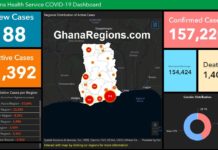
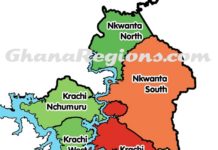

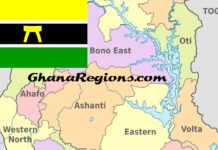
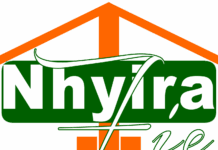
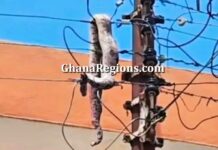








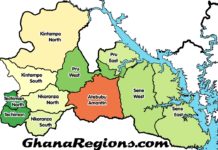
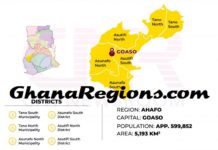


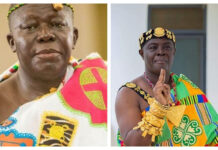
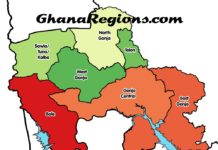

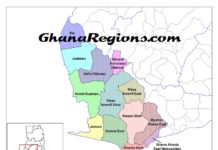
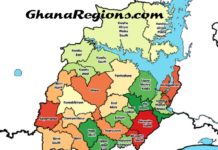


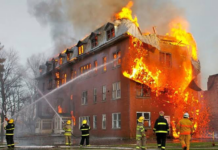


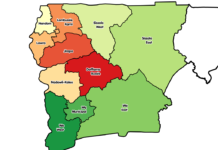
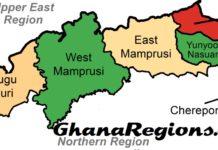
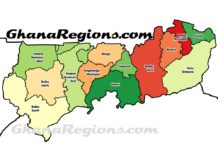
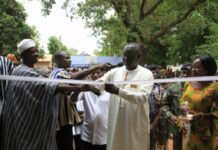








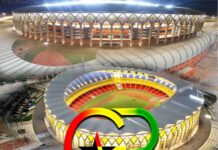
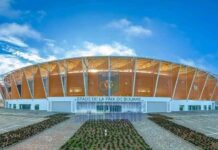

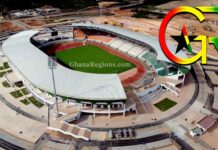
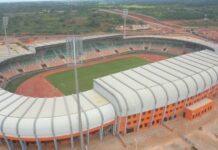




![Morocco knock out Spain on 3-0 penalties to reach FIFA World Cup 2022 quarter-final, Morocco vs Spain (0-0) (3-0) [Video]. Morocco knock out Spain on 3-0 penalties](https://ghanaregions.com/wp-content/uploads/2022/12/Watch-Morocco-vs-Spain-0-0-and-3-0-penalties-218x150.jpg)





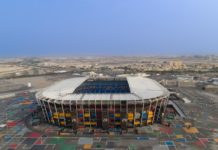
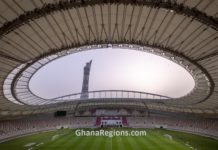







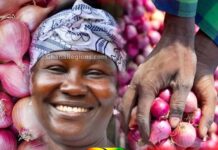







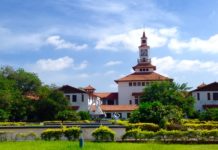










![Celestine Donkor Featuring Diana Hamilton – AKORFALA (Comforter) [Video] AKORFALA (Comforter) by Celestine Donkor Featuring Diana Hamilton](https://ghanaregions.com/wp-content/uploads/2025/04/akorfala_celestine-donkor_diana-hamilton-218x150.jpg)








